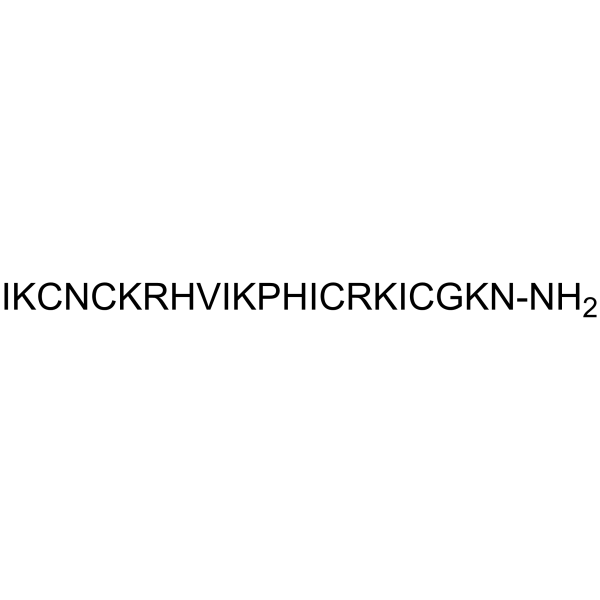Search Result
Results for "
mast cells
" in MedChemExpress (MCE) Product Catalog:
3
Biochemical Assay Reagents
6
Isotope-Labeled Compounds
| Cat. No. |
Product Name |
Target |
Research Areas |
Chemical Structure |
-
- HY-115768
-
|
Poly-p-methoxyphenethylmethylamine
|
Others
|
Neurological Disease
Cancer
|
|
Compound 48/80 (Poly-p-methoxyphenethylmethylamine) is widely used in animal and tissue models as a "selective" mast cell activator. Compound 48/80 acts at the mast cell membrane to stimulate trimeric G-proteins and induces degranulation via phospholipase C and D pathways .
|
-

-
- HY-145892
-
-

-
- HY-145893
-
-
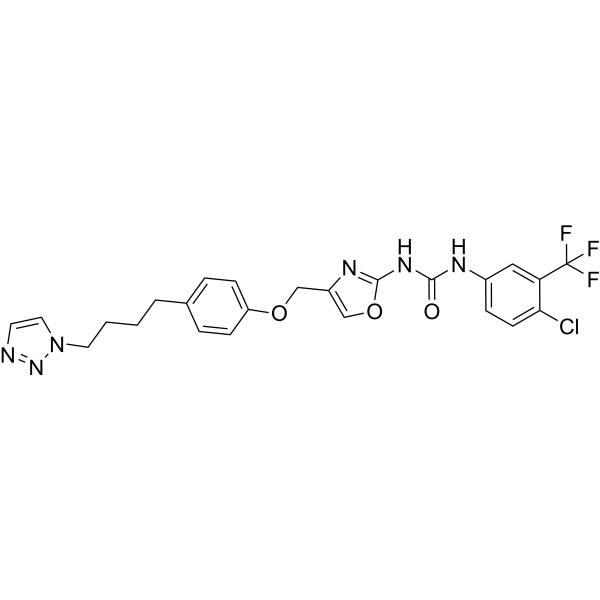
-
- HY-W062109
-
|
|
Endogenous Metabolite
Histamine Receptor
|
Inflammation/Immunology
|
|
Olopatadine is an orally active and selective histamine 1 (H1) receptor antagonist and a mast cell stabilizer. Olopatadine prevents immunologically stimulated pro-inflammatory mediator release from human conjunctival mast cells. Olopatadine can be used for researching allergic conjunctivitis .
|
-
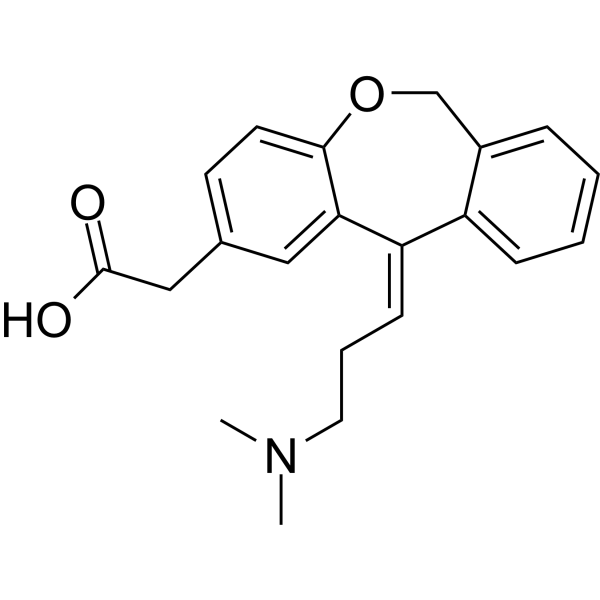
-
- HY-122295
-
|
|
Apoptosis
|
Inflammation/Immunology
Cancer
|
|
Dehydroleucodine is a sesquiterpene lactone isolated from Artemisia douglasiana. Dehydroleucodine is a mast cell stabilizer that inhibits tmast cell degranulation induced by compound 48/80. Dehydroleucodine inudces cells apoptosis, and has gastric ulcer inhibition and antileukemic effects .
|
-
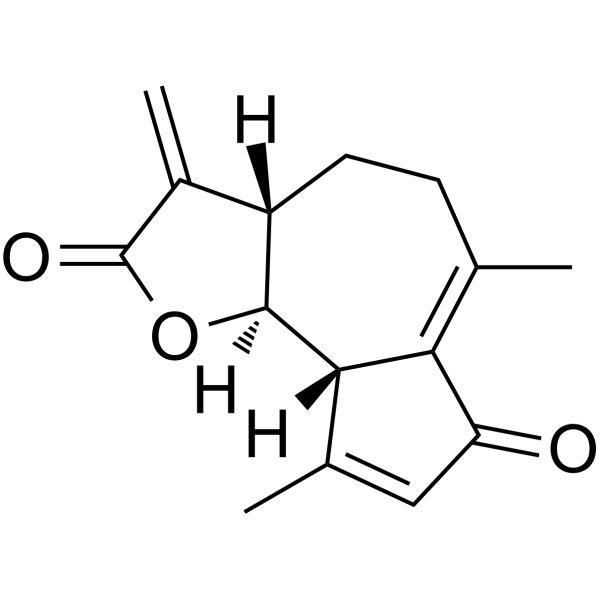
-
- HY-B0640A
-
|
WAL801 hydrochloride
|
Histamine Receptor
|
Inflammation/Immunology
Endocrinology
|
|
Epinastine hydrochloride (WAL801 hydrochloride) is an antihistamine and mast cell stabilizer. Epinastine hydrochloride is a potent, selective and orally-active histamine H1 receptor antagonist. Epinastine hydrochloride also inhibits IL-8 release and has an antiallergic action .
|
-
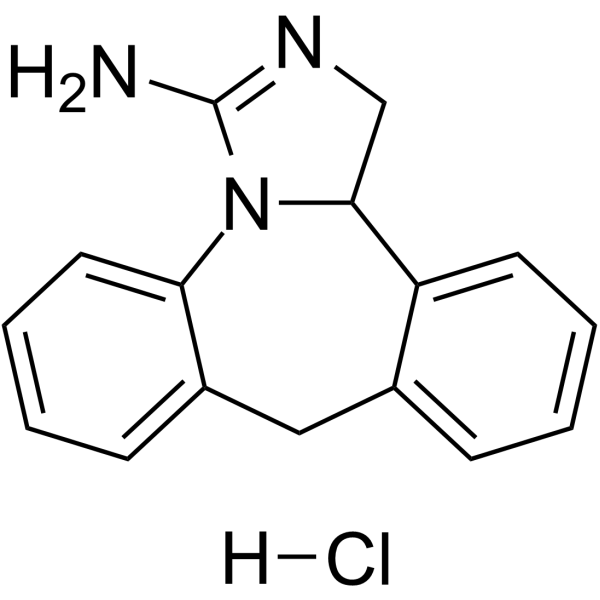
-
- HY-B0640
-
|
WAL801
|
Histamine Receptor
|
Inflammation/Immunology
Endocrinology
|
|
Epinastine (WAL801) is an antihistamine and mast cell stabilizer. Epinastine is a potent, selective and orally-active histamine H1 receptor antagonist. Epinastine also inhibits IL-8 release and has an antiallergic action .
|
-
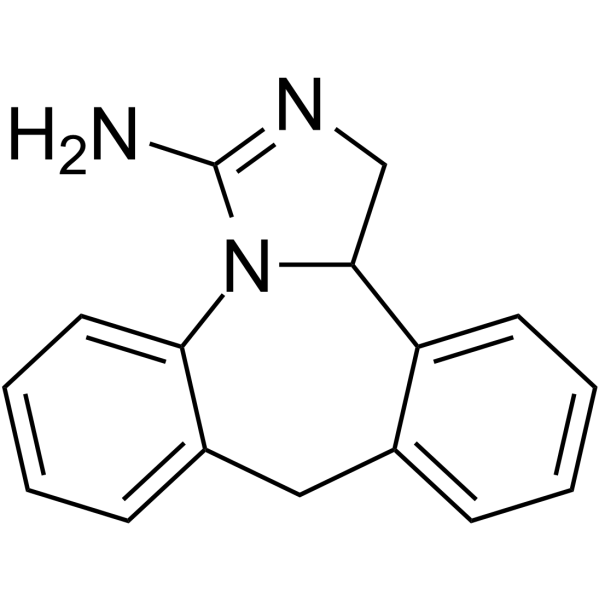
-
- HY-12521
-
|
|
CRAC Channel
|
Inflammation/Immunology
|
|
GSK-5498A is a selective CARC channel inhibitor (IC50: 1 μM). GSK-5498A inhibits mediators release from mast cells and pro-inflammatory cytokines release from T cells. GSK-5498A can be used in the research of inflammatory disorders .
|
-
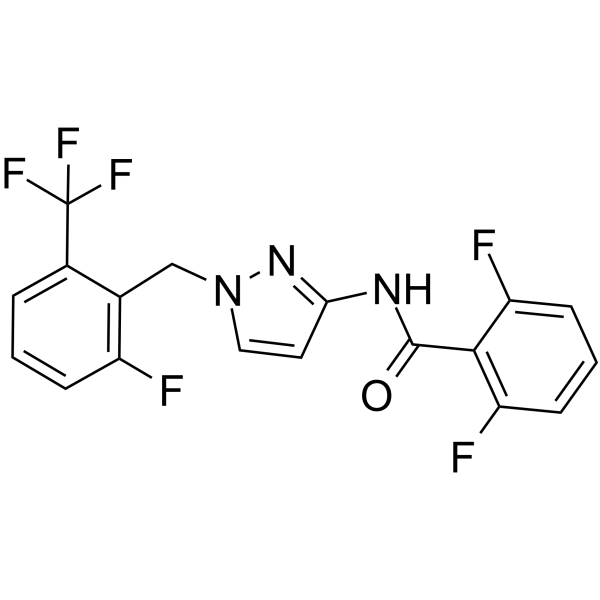
-
- HY-105999
-
|
|
Ser/Thr Protease
|
Inflammation/Immunology
|
|
APC 366 is a selective inhibitor of mast cell tryptase (Ki=7.1 μM). APC 366 inhibits antigen-induced early asthmatic response (EAR), late asthmatic response (LAR), and bronchial hyperresponsiveness (BHR) in a sheep model of allergic asthma .
|
-

-
- HY-N7885
-
|
(-)-(25R)-Spirost-4-ene-3,12-dione
|
Others
|
Inflammation/Immunology
|
|
(25R)-Spirost-4-ene-3,12-dione ((-)-(25R)-Spirost-4-ene-3,12-dione) is a natural product that has an inhibitory effect on neutrophil superoxide anion production and histamine release from mast cells .
|
-
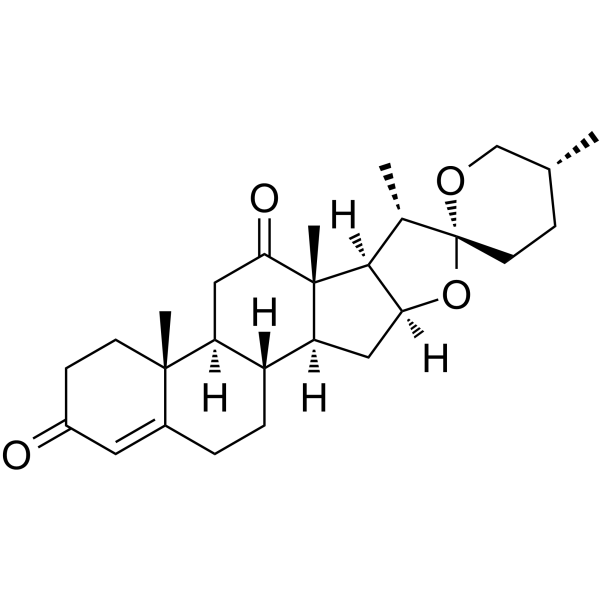
-
- HY-13508
-
|
|
Histamine Receptor
|
Inflammation/Immunology
|
|
JNJ-7777120 is a potent and selective histamine H4 receptor antagonist (Ki=4.5 nM). JNJ-7777120 effectively blocks histamine-induced migration of mouse tracheal mast cells from connective tissue to epithelial cells. JNJ-7777120 also significantly blocks neutrophil infiltration in a mouse Zymosan-induced peritonitis model. JNJ-7777120 has a good potential to study antipruritic and anti-inflammatory .
|
-
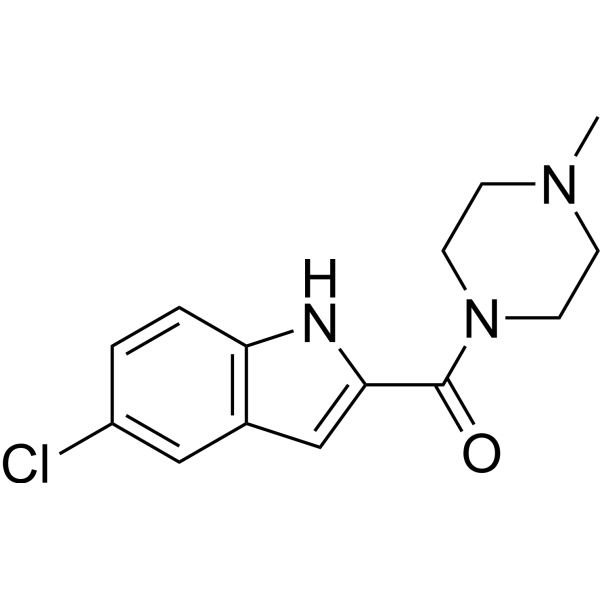
-
- HY-P99193
-
|
MEDI-528
|
Interleukin Related
|
Inflammation/Immunology
|
|
Enokizumab (MEDI-528) is a monoclonal antibody targeting to interleukin (IL)-9. IL-9 regulates the development of airway inflammation, mucus production, airway hyperresponsiveness, and airway fibrosis largely by increasing mast cell numbers and activity in the airways .
|
-

-
- HY-138961
-
|
|
Syk
|
Inflammation/Immunology
|
|
ER-27319, an acridone derivative, is a potent and selective SYK inhibitor, and inhibits the tyrosine phosphorylation of SYK and its activity. ER-27319 inhibits the release of antigen-induced allergic mediators from human and rat mast cells with an IC50 of 10 μM and can be used for study in allergic diseases .
|
-

-
- HY-108489
-
|
|
Syk
|
Inflammation/Immunology
|
|
ER-27319 (maleate), an acridone derivative, is a potent and selective SKY inhibitor, and inhibits the tyrosine phosphorylation of SYK and its activity. ER-27319 (maleate) inhibits the release of antigen-induced allergic mediators from human and rat mast cells with an IC50 of 10 μM and can be used for study in allergic diseases [1] [2] .
|
-
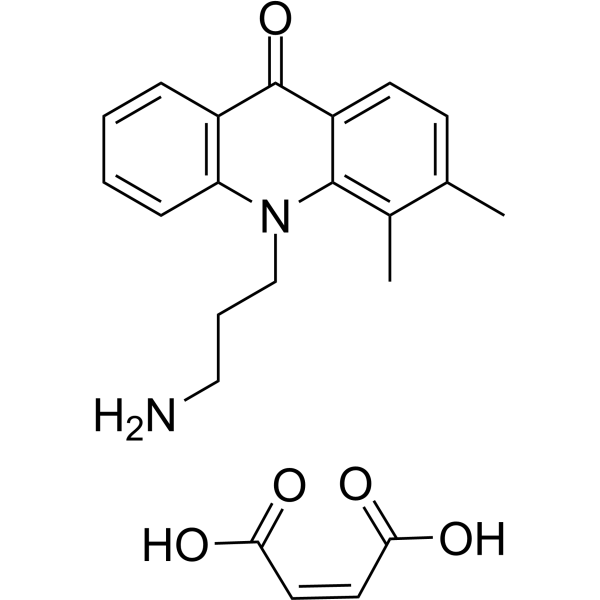
-
- HY-D1425
-
|
9-(2,2-Dicyanovinyl)julolidine
|
Fluorescent Dye
|
Others
|
|
DCVJ (9-(2,2-Dicyanovinyl)julolidine), a molecular rotor and unique fluorescent dye, binds to tubulin and actin, and increases its fluorescence intensity drastically upon polymerization. DCVJ also binds to phospholipid bilayers and increases its fluorescence intensity. DCVJ can detect the kinetic process of degranulation of mast cells .
|
-
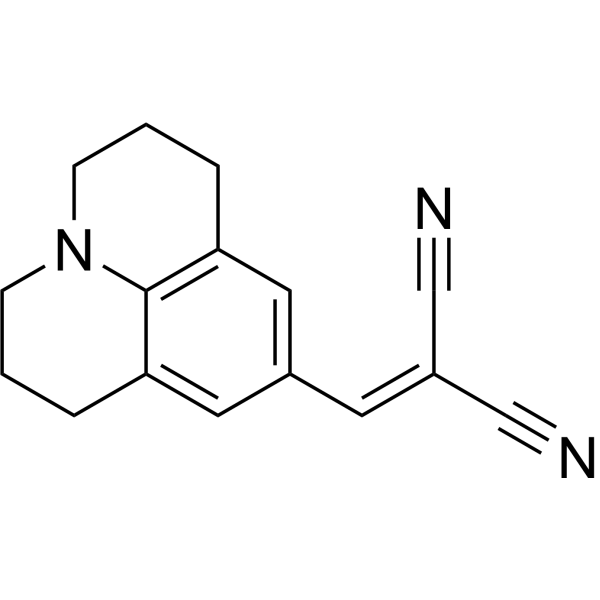
-
- HY-P99371
-
|
AK002; Anti-Siglec-8 Reference Antibody (lirentelimab)
|
Apoptosis
|
Inflammation/Immunology
|
|
Lirentelimab (AK002) is a humanized IgG1 monoclonal antibody that targets sialic acid-binding Ig-like lectin 8 (SIGLEC8). Lirentelimab induces cell apoptosis of IL-5-activated eosinophils and inhibits IgE-mediated mast cell activation. Lirentelimab can be used for the research of eosinophilic gastritis and duodenitis .
|
-
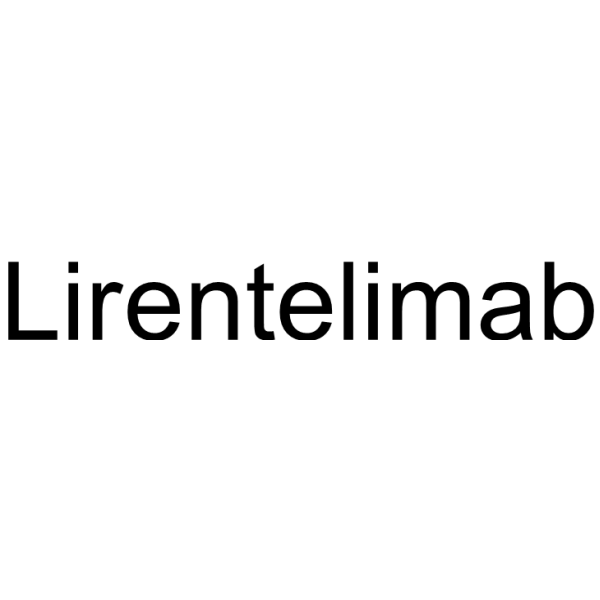
-
- HY-B0157A
-
|
HC 20511 fumarate
|
Histamine Receptor
Endogenous Metabolite
SARS-CoV
Influenza Virus
|
Inflammation/Immunology
Endocrinology
Cancer
|
|
Ketotifen (HC 20-511) fumarate is an orally active second-generation noncompetitive histamine 1 (H1) receptor blocker and mast cell stabilizer. Ketotifen fumarate can block 6-phosphogluconate dehydrogenase (PGD) in vitro. Ketotifen fumarate also has antiviral activity against SARS-CoV-2 and Influenza virus. Ketotifen fumarate can be used to the research of autoimmune encephalomyelitis (EAE) and asthma attack prevention .
|
-
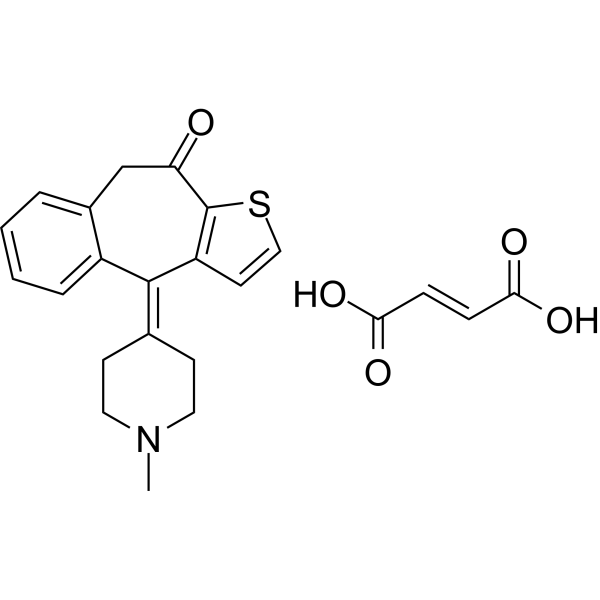
-
- HY-N3007A
-
|
|
Others
|
Inflammation/Immunology
|
|
(E)-Naringenin chalcone is an orally active anti-allergic agent. (E)-Naringenin chalcone also has antioxidant, anti-inflammatory activities. (E)-Naringenin chalcone can improve adipocyte functions. (E)-Naringenin chalcone inhibits histamine release from rat peritoneal mast cell .
|
-
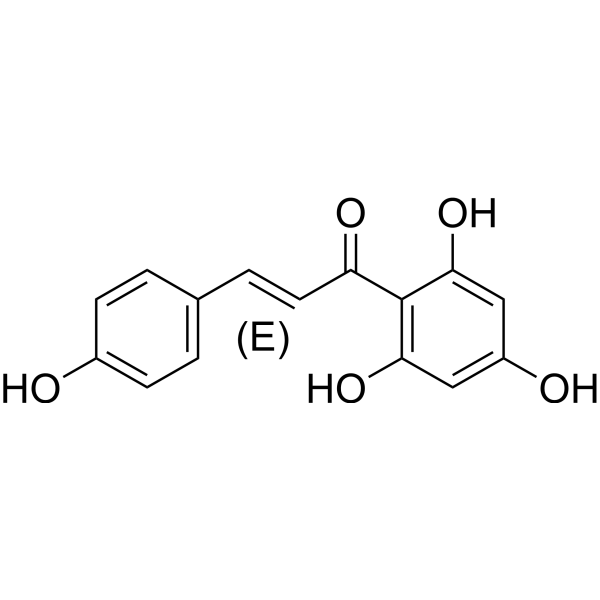
-
- HY-D0220A
-
|
Toluidine Blue O (purity 36%)
|
Fluorescent Dye
|
Others
|
|
Toluidine Blue (Toluidine Blue O) purity 36% is an alkaline quinonimine dye (vivo dye) with high affinity for acidic tissue components, staining nuclei blue and polysaccharides purple. Toluidine Blue purity 36% shows heterostaining properties for mast cells, mucins and chondrocytes. Toluidine Blue purity 36% can stain different components of plant tissues and cells in different colours. Toluidine Blue purity 36% is also used as a diagnostic aid to identify malignant lesions, such as cancer .
|
-
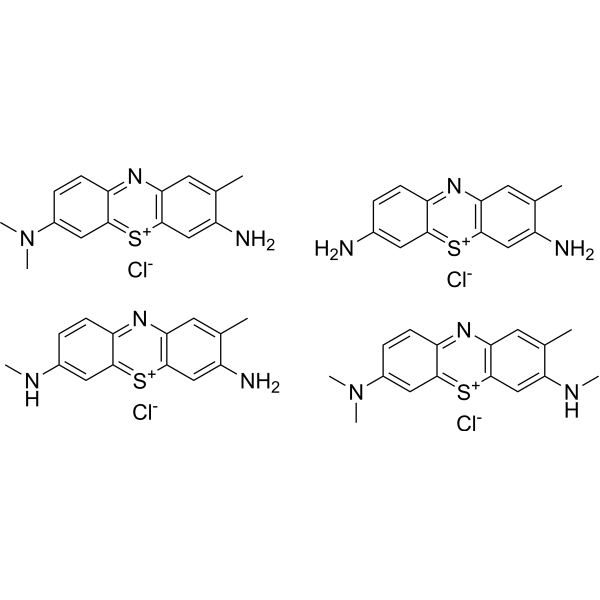
-
- HY-123532
-
|
VUF6002
|
Histamine Receptor
|
Neurological Disease
|
|
JNJ10191584 (VUF6002) is an orally active and selective histamine H4 receptor antagonist with a Ki value of 26 nM. JNJ10191584 shows 540-fold selectivity to H4 receptor over H3 receptor with a Ki value of 14.1 μM. JNJ10191584 inhibits chemotaxis of eosinophils and mast cells with IC50 values of 530 nM and 138 nM, respectively .
|
-
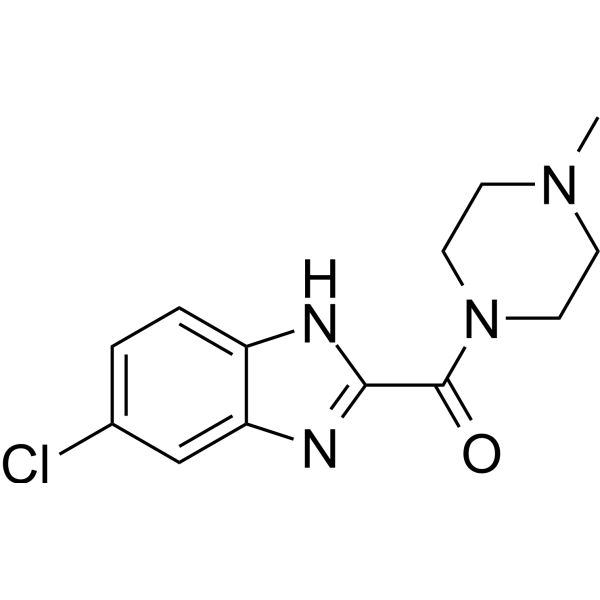
-
- HY-107558
-
|
VUF6002 maleate
|
Histamine Receptor
|
Neurological Disease
|
|
JNJ10191584 (VUF6002) maleate (compound 40) is an orally active and selective histamine H4 receptor antagonist with a Ki value of 26 nM. JNJ10191584 maleate shows 540-fold selectivity to H4 receptor over the H3 receptor with a Ki value of 14.1 μM. JNJ10191584 maleate inhibits chemotaxis of eosinophils and mast cells with IC50 values of 530 nM and 138 nM, respectively .
|
-
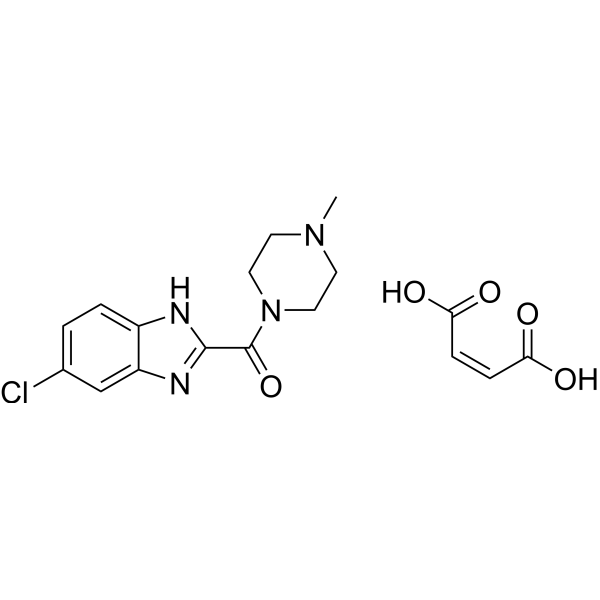
-
- HY-P1807
-
|
|
Histamine Receptor
|
Inflammation/Immunology
|
|
Mast Cell Degranulating Peptide HR-2, a 14-membered linear peptide isolated from the venom of the giant hornet Vespa orientalis, is capable of degranulating mast cells and thus initiating histamine release .
|
-
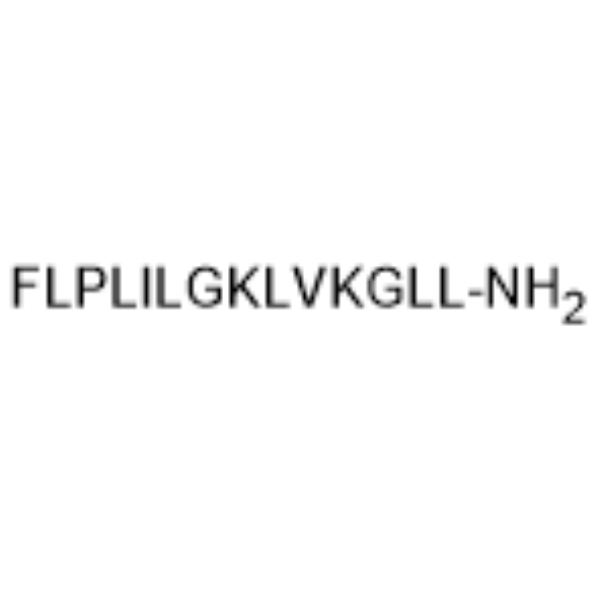
-
- HY-N11691
-
|
Thapsigargicine
|
Others
|
Inflammation/Immunology
|
|
Thapsigargicin (Thapsigargicine) is a activator of mast cells and leukocytes. Thapsigargicin induces histamine release from rat peritoneal mast cells and human basophil leukocytes. Thapsigargicin increases the cytoplasmic free calcium level in intact human blood platelets .
|
-
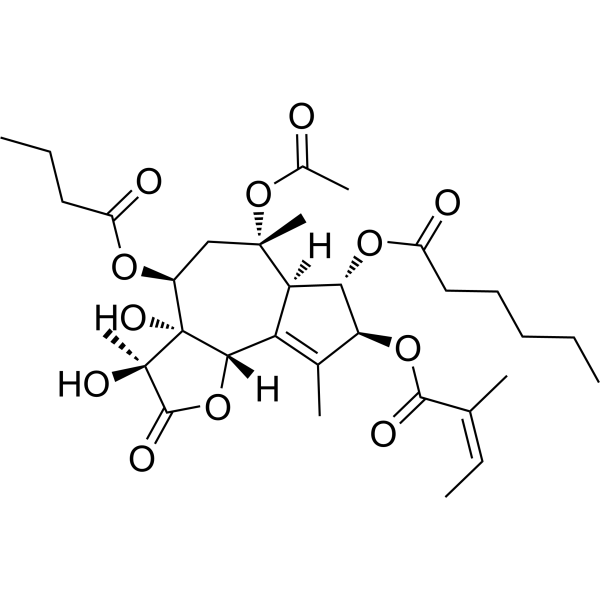
-
- HY-N8593
-
|
|
TNF Receptor
|
Infection
|
|
Undecane has anti-allergic and anti-inflammatory activities on sensitized rat basophilic leukemia (RBL-2H3) mast cells and HaCaT keratinocytes. In sensitized mast cells, Undecane inhibits degranulation and the secretion of histamine and TNF-α [
|
-

-
- HY-P2706
-
|
|
Histamine Receptor
|
Endocrinology
|
|
Granuliberin R is a new mast cell degranulating peptide comes from amphibian, can be isolated from the skin of frog Rana rugosa. Granuliberin R is a dodecapeptide, can act on rat peritoneal mast cell to liberate granules and release histamine .
|
-
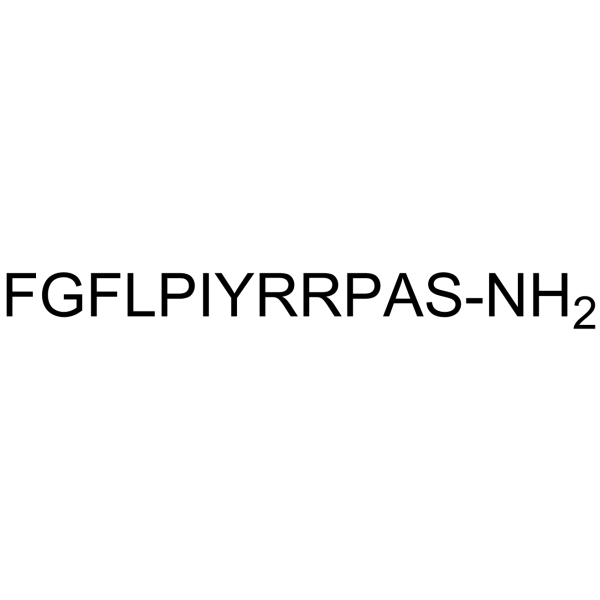
-
- HY-N4207
-
|
|
Others
|
Others
|
|
Cnidicin, a coumarin, inhibits the degranulation of mast cell and the nitric oxide (NO) generation in RAW 264.7 cells .
|
-
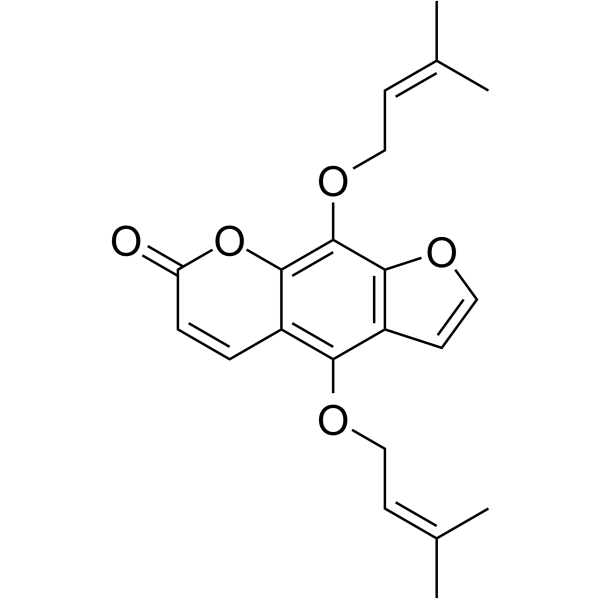
-
- HY-101810
-
|
TO 188; Tazalest; Tazanol
|
Others
|
Inflammation/Immunology
|
|
Tazanolast is a selective mast-cell-stabilizing agent, on ozone-induced airway hyperresponsiveness in guinea pigs.
|
-

-
- HY-124252
-
|
ETI
|
Lipoxygenase
|
Cancer
|
|
5,8,11-Eicosatriynoic acid (ETI) is a lipoxygenase inhibitor that blocks LTC4 biosynthesis in mast cell tumor cells .
|
-

-
- HY-B0538A
-
-
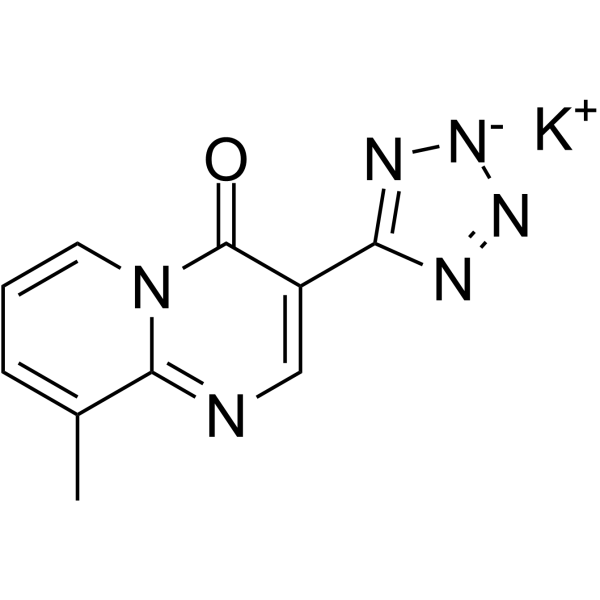
-
- HY-N8593S
-
|
|
TNF Receptor
|
Infection
|
|
Undecane-d24 is the deuterium labeled Undecane[1]. Undecane has anti-allergic and anti-inflammatory activities on sensitized rat basophilic leukemia (RBL-2H3) mast cells and HaCaT keratinocytes. In sensitized mast cells, Undecane inhibits degranulation and the secretion of histamine and TNF-α[2].
|
-
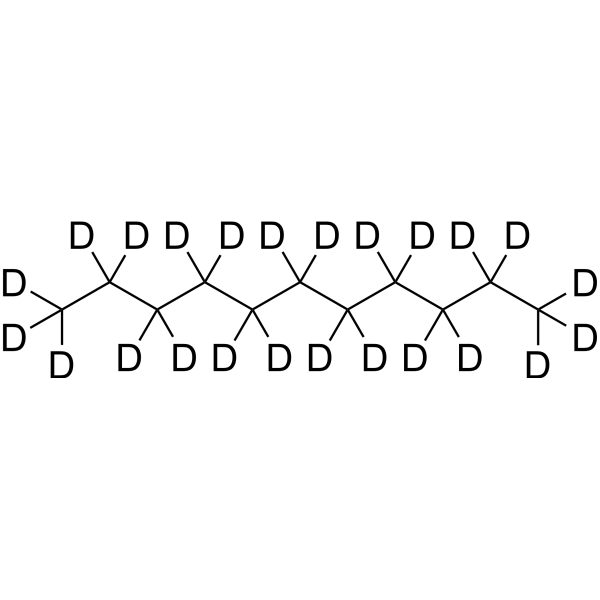
-
- HY-P4580
-
|
|
Proteasome
|
Others
|
|
Suc-Ala-Ala-Pro-Phe-SBzl can be used as the substrate of rat intestinal mast cell protease (RMCP I), rat skeletal muscle mast cell protease (RMCP II) and Chymotrypsin (HY-108910). Suc-Ala-Ala-Pro-Phe-SBzl can be hydrolyzed by glycine (R208G) .
|
-

-
- HY-N2095
-
|
Atractylon
|
Influenza Virus
|
Infection
Inflammation/Immunology
|
|
Atractylone (Atractylon) is a sesquiterpenoid extracted from Atractylodis Rhizoma. Atractylone (Atractylon) alleviates influenza A virus (IAV)-induced lung injury via regulating the TLR7 signaling pathway, and acts as a promising agent for IAV treatment. Atractylone (Atractylon) inhibits the degranulation of mast cell and exhibits potential for the treatment of mast cell-mediated allergic reactions .
|
-
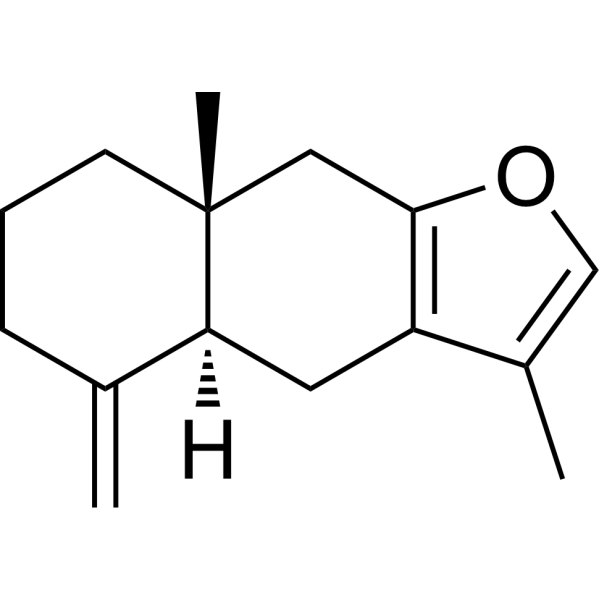
-
- HY-16289
-
-
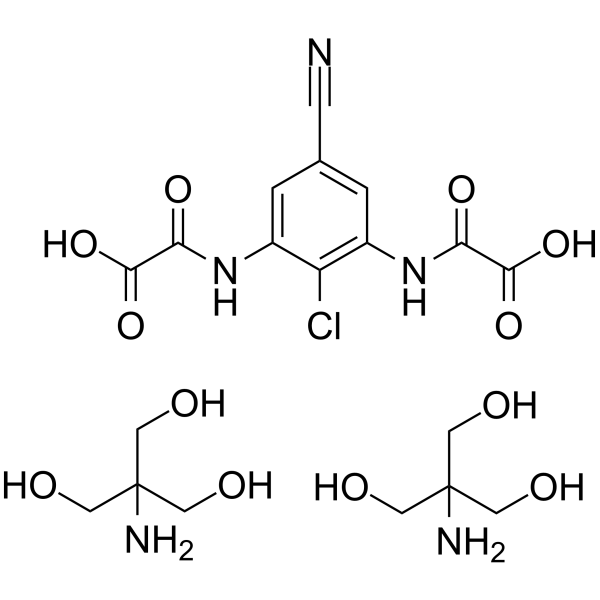
-
- HY-100269
-
|
|
|
|
|
Chymase-IN-1 is a potent, selective, orally active, nonpeptide inhibitor of human mast cell chymase with an IC50 of 29 nM.
|
-

-
- HY-W062109S
-
|
|
Histamine Receptor
Endogenous Metabolite
|
Inflammation/Immunology
|
|
Olopatadine-d6 is the deuterium labeled Olopatadine[1]. Olopatadine is an orally active and selective histamine 1 (H1) receptor antagonist and a mast cell stabilizer. Olopatadine prevents immunologically stimulated pro-inflammatory mediator release from human conjunctival mast cells. Olopatadine can be used for researching allergic conjunctivitis[2][3].
|
-
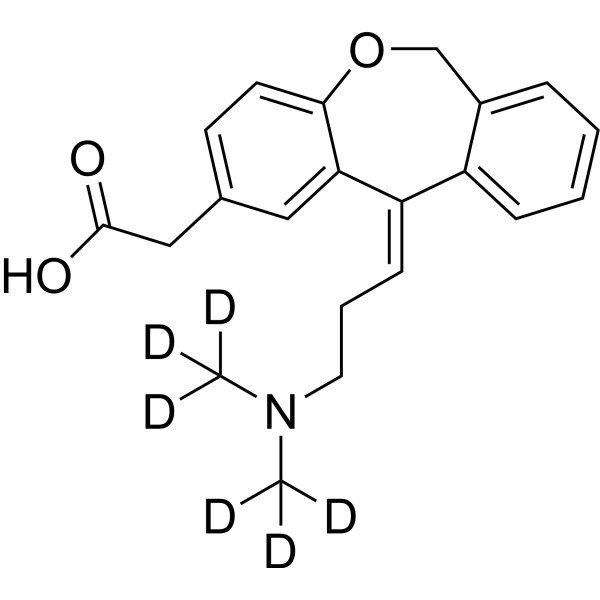
-
- HY-14270
-
-
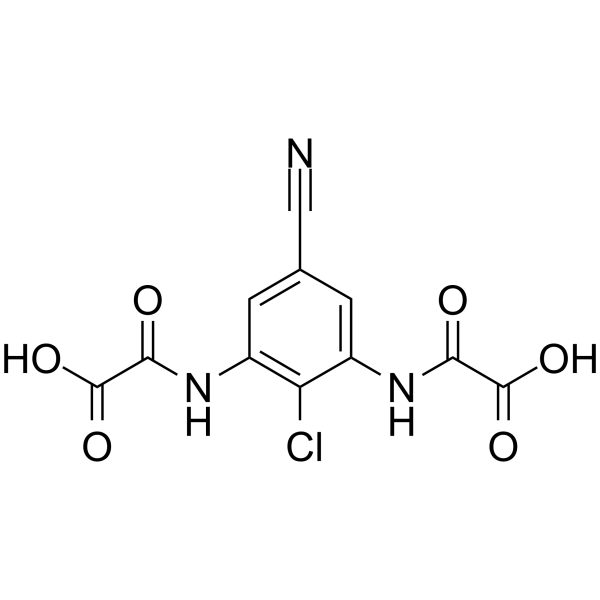
-
- HY-105999B
-
|
|
Others
|
Others
|
|
APC 366 (TFA) is an irreversible mast cell tryptase inhibitor. APC 366 (TFA) can be used for the research of allergic diseases .
|
-

-
- HY-N12295
-
|
|
Others
|
Inflammation/Immunology
|
|
Ciwujianoside D1 is a natural product that can inhibit histamine release induced by anti-immunoglobulin E from rat peritoneal mast cells .
|
-

-
- HY-B1619
-
|
Cromoglicic acid
|
Others
|
Inflammation/Immunology
|
|
Cromolyn is a mast cell stabilizer. Cromolyn has the potential for the research of bronchial asthma, allergic rhinitis, and certain allergic eye conditions such as vernal conjunctivitis, keratitis, and keratoconjunctivitis .
|
-
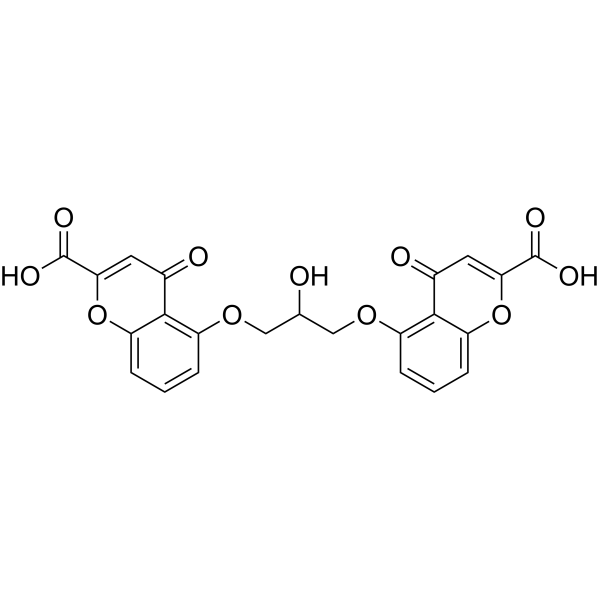
-
- HY-148244
-
-
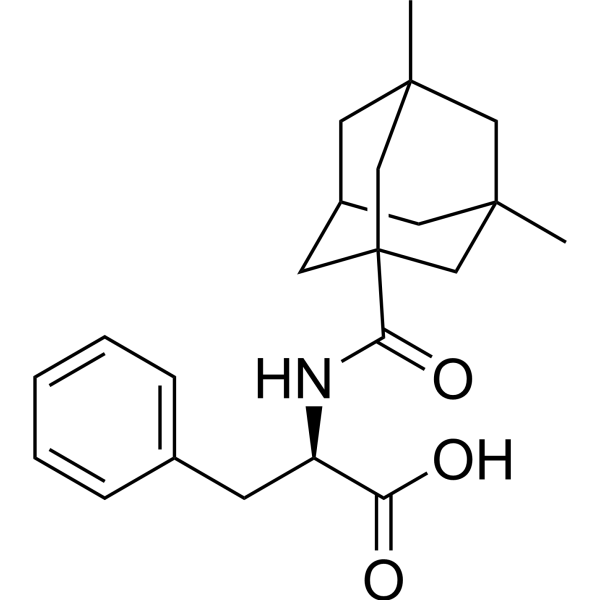
-
- HY-122161
-
|
RWJ-355871
|
Cathepsin
|
Inflammation/Immunology
|
|
JNJ-10311795 (RWJ-355871), a potent dual inhibitor of neutrophil cathepsin G (Ki = 38 nM) and mast cell chymase (Ki = 2.3 nM), exhibits noteworthy antiinflammatory activity .
|
-
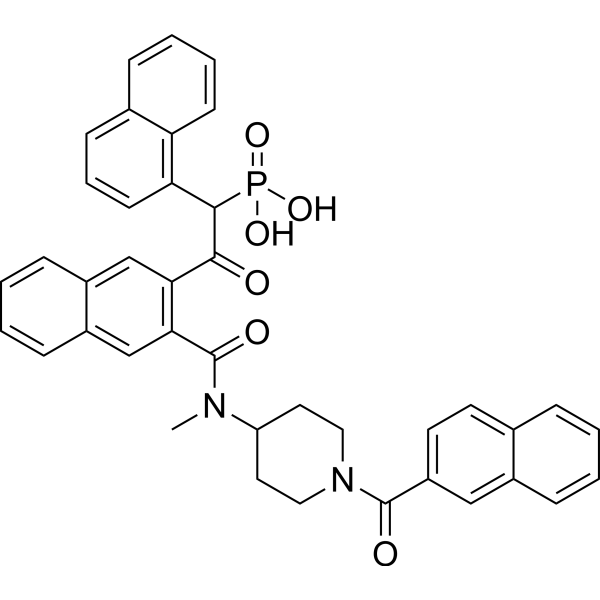
-
- HY-12537
-
-
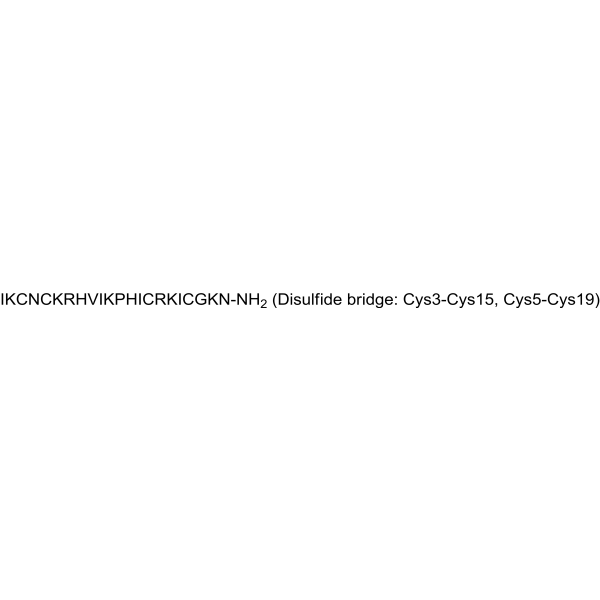
-
- HY-N12254
-
|
|
p38 MAPK
|
Others
|
|
Natsudaidain is a kind of polymethoxyflavone. Natsudaidain can be isolated from Citrus plants. Natsudaidain inhibits tumor necrosis factor-α and cyclooxygenase-2 production n by suppressing p38 MAPK phosphorylation on mast cells .
|
-
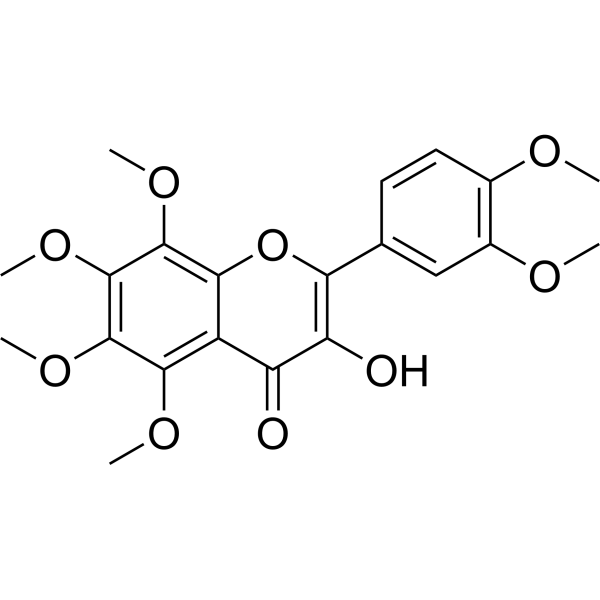
-
- HY-B0157AS
-
-
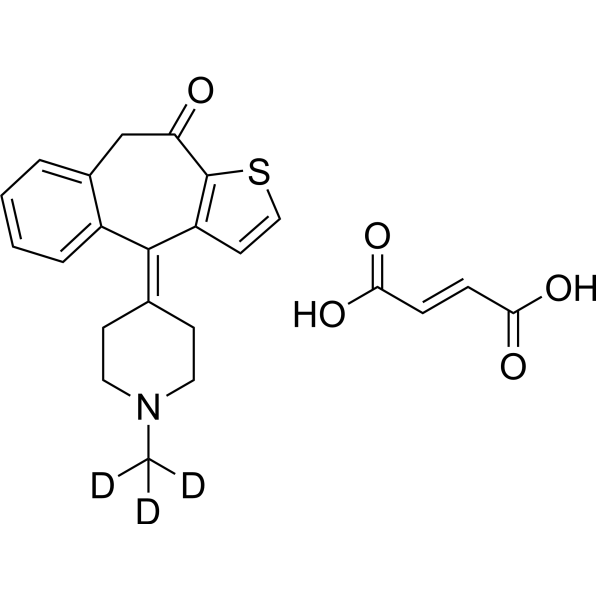
-
- HY-P99462
-
|
CDX 0159
|
c-Kit
|
Inflammation/Immunology
|
|
Barzolvolimab (CDX 0159) is a humanized anti-KIT IgG1 monoclonal antibody. Barzolvolimab specificity and potently inhibits KIT activation by SCF. Barzolvolimab can reduce skin mast cells and disease activity in chronic inducible urticaria .
|
-

-
- HY-B1404
-
|
Buphenine hydrochloride
|
|
|
|
Nylidrin hydrochloride was an effective inhibitor of IgE-mediated release of histamine from passively sensitized rat peritoneal mast cells and human basophils, and of IgG1-mediated release of histamine from passively sensitized guinea pig lung slices.
|
-
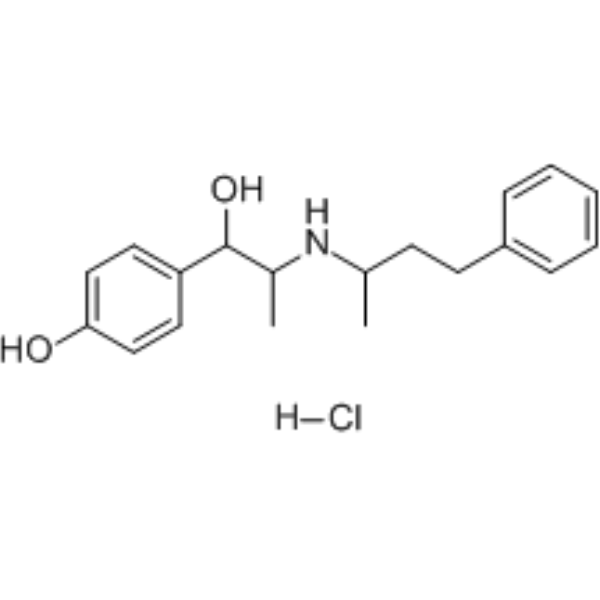
-
- HY-B1619S
-
|
Cromoglicic acid-d5
|
Isotope-Labeled Compounds
|
Inflammation/Immunology
|
|
Cromoglicic acid-d5 is the deuterium labeled Cromolyn[1]. Cromolyn is a mast cell stabilizer. Cromolyn has the potential for the research of bronchial asthma, allergic rhinitis, and certain allergic eye conditions such as vernal conjunctivitis, keratitis, and keratoconjunctivitis[2].
|
-

-
- HY-124257
-
|
D-Citronellol; (R)-(+)-β-Citronellol
|
Endogenous Metabolite
|
Inflammation/Immunology
|
|
(R)-Citronellol (D-Citronellol) is an alcoholic monoterpene found in geranium essential oil. (R)-Citronellol inhibits degranulation of mast cells and does not affect caffeine bitterness perception. (R)-Citronellol can be used in decorative cosmetics, toiletries as well as in non-cosmetic products .
|
-
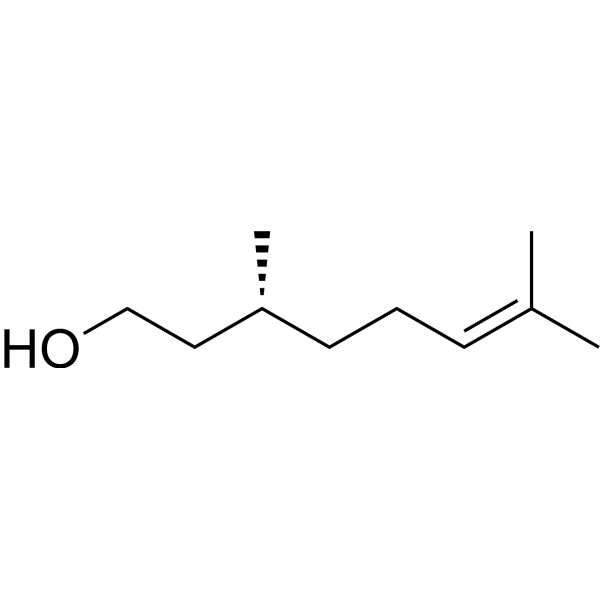
-
- HY-110013
-
|
|
Btk
Antibiotic
|
Infection
Inflammation/Immunology
|
|
Terreic acid, a quinone epoxide antibiotic, acts as an effective Btk inhibitor. Terreic acid blocks the interaction between PKC and the pleckstrin homology domain of Btk. Terreic acid inhibits the binding of GST-BtkPH to PKC in lysates of HMC-1 human mast cells with an IC50 of approximately 100 μM .
|
-
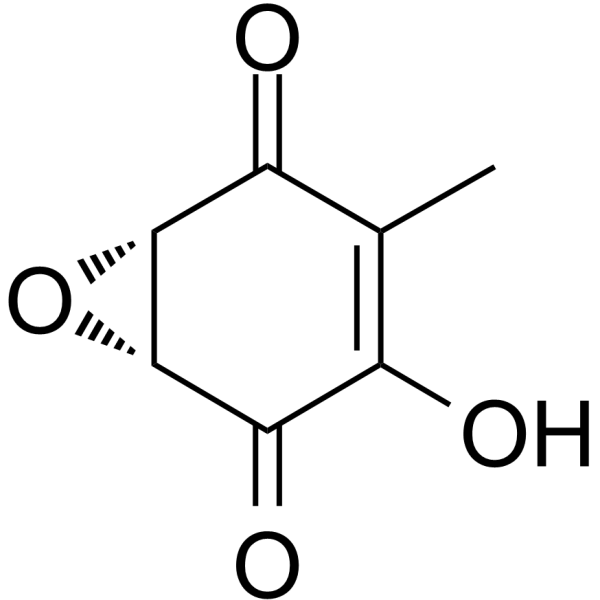
-
- HY-19839
-
|
Antibiotic C 15003P3'; Maytansinol butyrate
|
|
|
|
Ansamitocin P 3' (Antibiotic C 15003P3') is an anti-tumor antibiotic. Ansamitocin P 3' prolongs the survival of mice with leukemia P388, melanoma B16, leukemia L1210, sarcoma 180, Ehrlich carcinoma and mast cell tumor P815 .
|
-
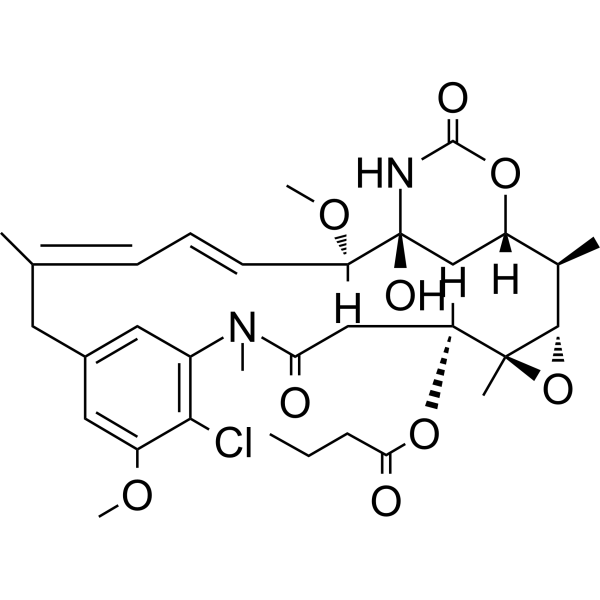
- HY-17039
-
|
R89674
|
Histamine Receptor
|
Inflammation/Immunology
Endocrinology
|
|
Alcaftadine (R89674) is a histamine H1 receptor antagonist, which is used to prevent eye irritation brought on by allergic conjunctivitis. Alcaftadine is a broad-spectrum antihistamine displaying a high affinity for histamine H1 and H2 receptors and a lower affinity for H4 receptors. Alcaftadine also exhibits modulatory action on immune cell recruitment and mast cell stabilizing effects .
|
-
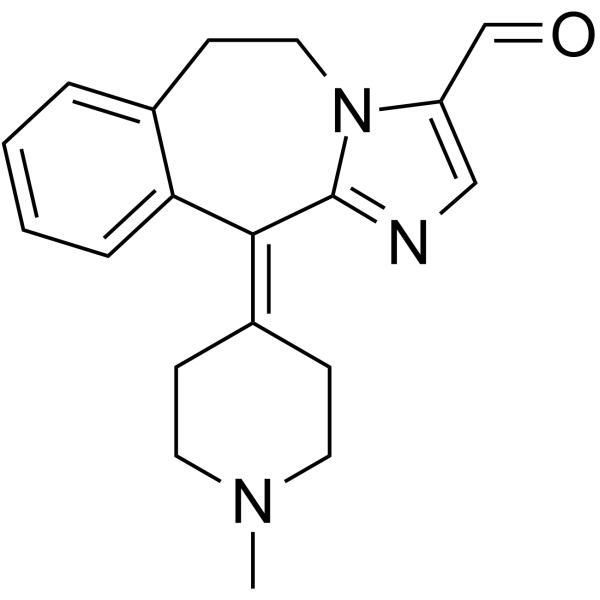
- HY-130592
-
|
C48/80 trihydrochloride
|
Phospholipase
|
Neurological Disease
|
|
Compound 48/80 trihydrochloride (C48/80 trihydrochloride) is a mixture of condensation products of N-methyl-p-methoxyphenethylamine with formaldehyde. Compound 48/80 trihydrochloride is also a histamine releaser and a mast cell degranulator. Compound 48/80 inhibits phosphatidylinositol-specific phospholipase C activity from human platelets .
|
-

- HY-N3421
-
|
|
Interleukin Related
TNF Receptor
Influenza Virus
|
Infection
Inflammation/Immunology
Cancer
|
|
Koaburaside is a cytoprotective and anti-inflammatory natural compound. Koaburaside shows antioxidant activity with an IC50 of 9.0 μM for DPPH-free radical scavenging assay. Koaburaside inhibits histamine release and expressions of IL-6 and TNF-α in human mast cells. Koaburaside also effectively inhibits influenza A neuraminidase .
|
-
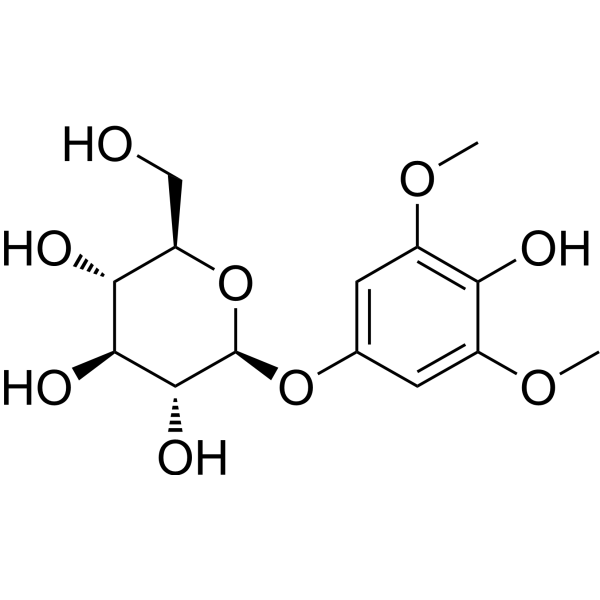
- HY-10330
-
|
SU11654; PHA 291639E
|
PDGFR
VEGFR
c-Kit
|
Cancer
|
|
Toceranib phosphate (SU11654 phosphate) is an orally active receptor tyrosine kinase (RTK) inhibitor, and it potently inhibits PDGFR, VEGFR, and Kit with Kis of 5 and 6 nM for PDGFRβ and Flk-1/KDR, respectively. Toceranib phosphate (SU11654 phosphate) has antitumor and antiangiogenic activity, and used in the treatment of canine mast cell tumors .
|
-

- HY-10330A
-
|
SU11654 phosphate; PHA 291639E phosphate
|
PDGFR
VEGFR
c-Kit
|
Cancer
|
|
Toceranib phosphate (SU11654 phosphate) is an orally active receptor tyrosine kinase (RTK) inhibitor, and it potently inhibits PDGFR, VEGFR, and Kit with Kis of 5 and 6 nM for PDGFRβ and Flk-1/KDR, respectively. Toceranib phosphate (SU11654 phosphate) has antitumor and antiangiogenic activity, and used in the treatment of canine mast cell tumors .
|
-

- HY-107411
-
|
(6E)-Bromoenol lactone
|
Phospholipase
|
Inflammation/Immunology
|
|
Bromoenol lactone ((6E)-Bromoenol lactone) is a suicide-based irreversible, selective, potent inhibitor of calcium-independent phospholipase A2 (iPLA2β) with an IC50 value of approximately 7 μM, which inhibits antigen-stimulated mast cell exocytosis without blocking Ca 2+ influx .
|
-
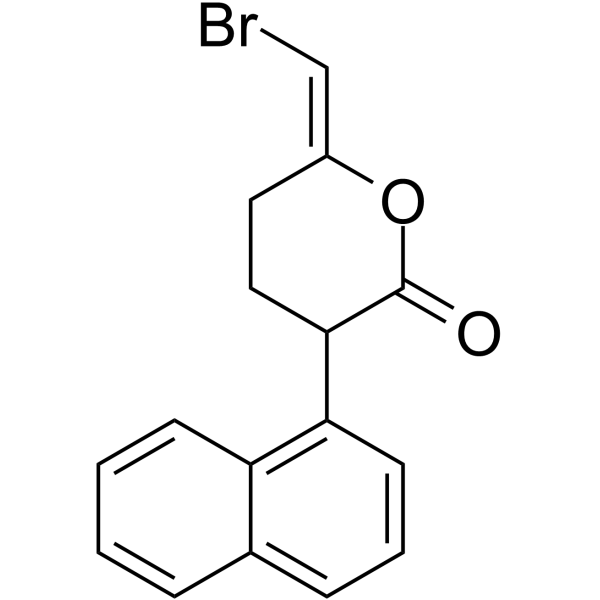
- HY-B0640AR
-
|
WAL801 hydrochloride (Standard)
|
Histamine Receptor
|
Inflammation/Immunology
Endocrinology
|
|
Epinastine (hydrochloride) (Standard) is the analytical standard of Epinastine (hydrochloride). This product is intended for research and analytical applications. Epinastine hydrochloride (WAL801 hydrochloride) is an antihistamine and mast cell stabilizer. Epinastine hydrochloride is a potent, selective and orally-active histamine H1 receptor antagonist. Epinastine hydrochloride also inhibits IL-8 release and has an antiallergic action .
|
-
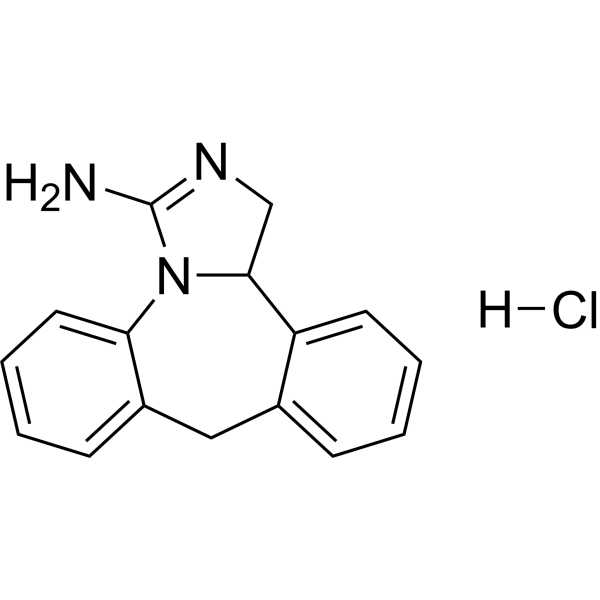
- HY-N10182
-
|
|
Histamine Receptor
|
Inflammation/Immunology
|
|
Spinacetin is a natural product that can be isolated from Inula japonica. Spinacetin inhibits the release of histamine. Spinacetin has anti-inflammatory activity .
|
-

- HY-D0220
-
|
Toluidine Blue O
|
Fluorescent Dye
|
Cancer
|
|
Toluidine Blue (Toluidine Blue O) is an alkaline quinonimine dye (vivo dye) with high affinity for acidic tissue components, staining nuclei blue and polysaccharides purple. Toluidine Blue shows heterostaining properties for mast cells, mucins and chondrocytes. Toluidine Blue can stain different components of plant tissues and cells in different colours. Toluidine Blue is also used as a diagnostic aid to identify malignant lesions, such as cancer .
|
-

- HY-139247
-
|
|
Others
|
Inflammation/Immunology
|
|
pNPS-DHA (Compound 19) is an orally active DHA-ethanolamide (DHEA) derivative that has antiallergic activity. pNPS-DHA inhibits IgE-dependent passive cutaneous anaphylaxis (PCA) reaction in mice. pNPS-DHA has anti-degranulating activity in RBL-2H3 mast cells with an IC50 of 15 μM .
|
-

- HY-B0640S
-
|
WAL801-13C,d3 hydrobromide
|
Isotope-Labeled Compounds
Histamine Receptor
|
Inflammation/Immunology
Endocrinology
|
|
Epinastine- 13C,d3 (hydrobromide) is the 13C- and deuterium labeled Epinastine. Epinastine (WAL801) is an antihistamine and mast cell stabilizer. Epinastine is a potent, selective and orally-active histamine H1 receptor antagonist. Epinastine also inhibits IL-8 release and has an antiallergic action[1][2][3][4].
|
-

- HY-N4126
-
|
|
Anaplastic lymphoma kinase (ALK)
|
Neurological Disease
Inflammation/Immunology
Cancer
|
|
6-Demethoxytangeretin is a citrus flavonoid isolated from Citrus reticulata. 6-Demethoxytangeretin exerts anti-inflammatory activity and anti-allergic activity, suppresses production and gene expression of interleukin-6 in human mast cell-1 via anaplastic lymphoma kinase (ALK) and mitogen-activated protein kinase (MAPK) pathways . 6-Demethoxytangeretin facilitates the CRE-mediated transcription associated with learning and memory in cultured hippocampal neurons .
|
-
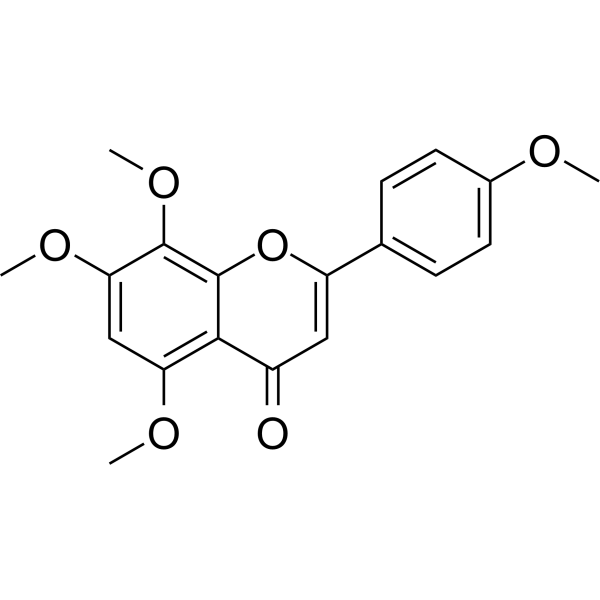
- HY-10330S
-
|
|
Isotope-Labeled Compounds
PDGFR
VEGFR
c-Kit
|
Cancer
|
|
Toceranib-d8 is the deuterium labeled Toceranib. Toceranib (SU11654) is an orally active receptor tyrosine kinase (RTK) inhibitor, and it potently inhibits PDGFR, VEGFR, and Kit with Kis of 5 and 6 nM for PDGFRβ and Flk-1/KDR, respectively. Toceranib (SU11654) has antitumor and antiangiogenic activity, and used in the treatment of canine mast cell tumors[1][2].
|
-
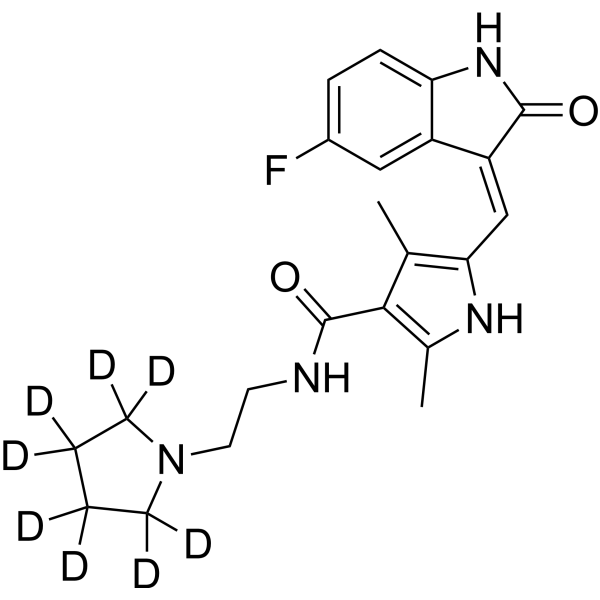
- HY-N0631
-
|
|
p38 MAPK
NF-κB
|
Inflammation/Immunology
|
|
Cornuside is a secoiridoid glucoside isolated from the fruit of Cornus officinalis Sieb. et Zucc., which is a traditional oriental medicine for treating inflammatory diseases and invigorating blood circulation. Cornuside inhibits mast cell-mediated allergic response by down-regulating MAPK and NF-κB signaling pathways. Cornuside has anti-allergic effects in vivo and in vitro which suggests a therapeutic application of this agent in inflammatory allergic diseases .
|
-
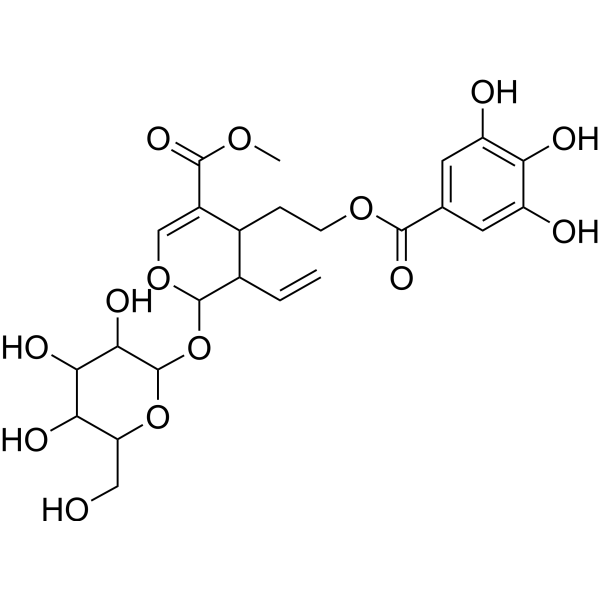
- HY-13072
-
|
AS-703569; R-763
|
Aurora Kinase
Bcr-Abl
Akt
STAT
FLT3
|
Cancer
|
|
Cenisertib (AS-703569) is an ATP-competitive multi-kinase inhibitor that blocks the activity of Aurora-kinase-A/B, ABL1, AKT, STAT5 and FLT3. Cenisertib induces major growth-inhibitory effects by blocking the activity of several different molecular targets in neoplastic mast cells (MC). Cenisertib inhibits tumor growth in xenograft models of pancreatic, breast, colon, ovarian, and lung tumors and leukemia .
|
-
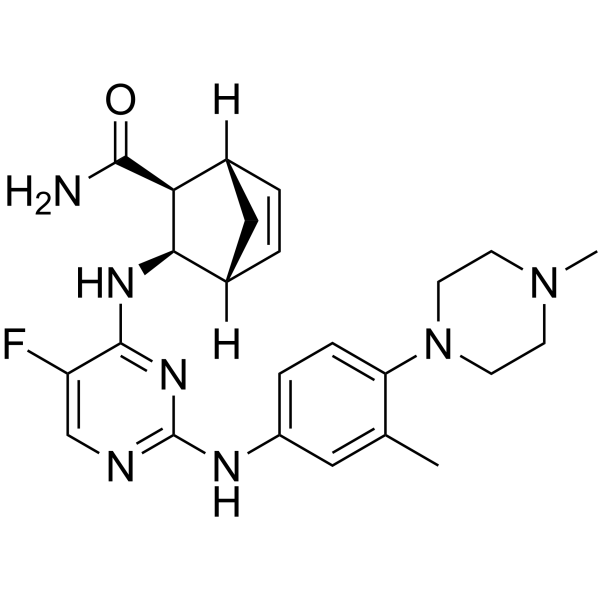
- HY-B0157
-
|
HC 20-511
|
|
|
|
Ketotifen (HC 20-511) is an orally active second-generation noncompetitive histamine 1 (H1) receptor blocker and mast cell stabilizer. Ketotifen can block 6-phosphogluconate dehydrogenase (PGD) in vitro. Ketotifen also has antiviral activity against SARS-CoV-2 and Influenza virus. Ketotifen can be used to the research of autoimmune encephalomyelitis (EAE) and asthma attack prevention .
|
-

- HY-116953
-
|
LXB4
|
Endogenous Metabolite
|
Inflammation/Immunology
|
|
Lipoxin B4 (LXB4) is a structurally distinct product of arachidonic acid metabolism. Lipoxin B4 reduces leukocyte infiltration and mucus secretion in the nasal mucosa and decreases mast cell and eosinophil degranulation in the upper airway. Lipoxin B4 decreases airway inflammation, mucus metaplasia and hyper- responsiveness in the lower airway. Lipoxin B4 shows mucosal protective actions and has the potential for the research of allergic inflammation in the upper and lower airways .
|
-
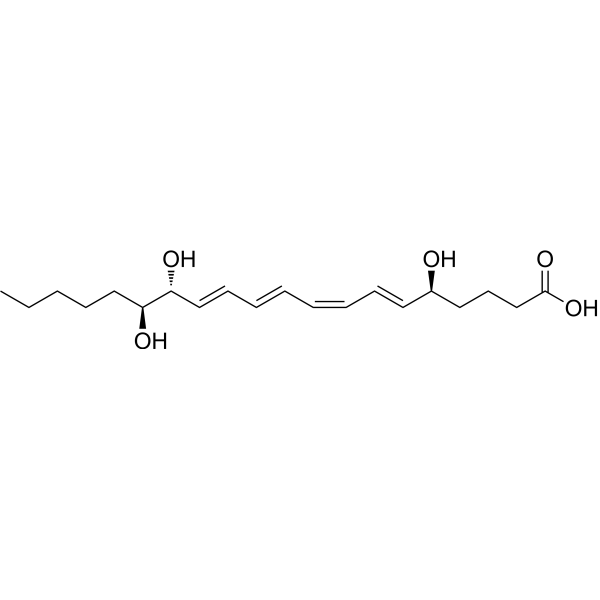
- HY-106481
-
|
|
GPR35
Histamine Receptor
|
Inflammation/Immunology
|
|
Bufrolin is a Cromoglycate (histamine release inhibitor) analog and a high potency agonist of GPR35. Bufrolin promotes interactions between β-arrestin-2 and either human GPR35a or rat GPR35. Bufrolin also serves as antiallergic mast cell stabilizer and inhibit an anti-inflammatory response inducible by the internalization peptide. Bufrolin acts as an anti-inflammatory agent to be used in research of delivering pharmacol linked with internalization peptide .
|
-
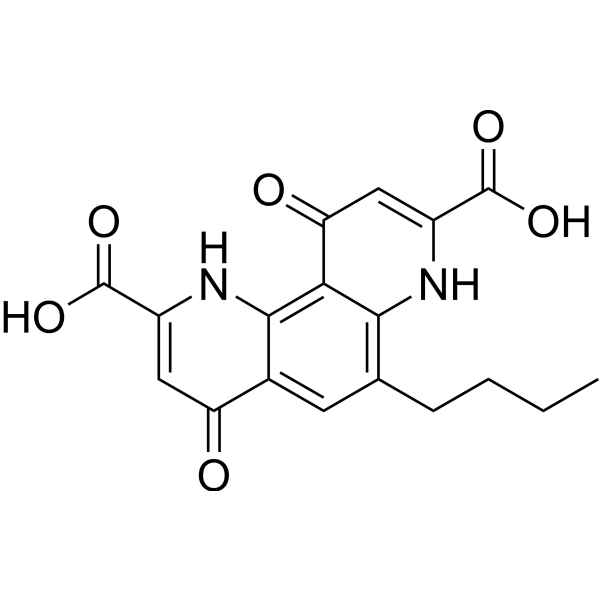
- HY-15342
-
|
OC000459
|
Prostaglandin Receptor
|
Inflammation/Immunology
Endocrinology
|
|
Timapiprant (OC000459) is a potent, selective, and orally active D prostanoid receptor 2 (DP2, also known as CRTH2) antagonist. Timapiprant (OC000459) potently displaces [ 3H] PGD2 from human recombinant DP2 (Ki=13 nM), rat recombinant DP2 (Ki=3 nM), and human native DP2 (Ki=4 nM). Timapiprant (OC000459) inhibits mast cell activation of Th2 lymphocytes and eosinophils .
|
-
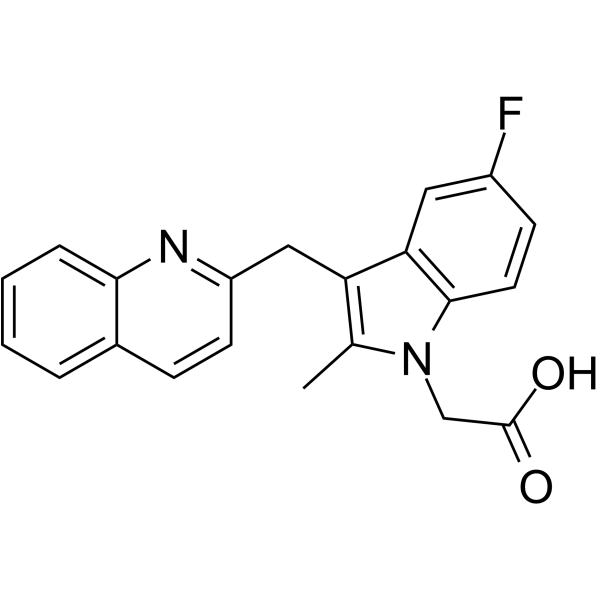
- HY-15342A
-
|
OC000459 sodium
|
Prostaglandin Receptor
|
Inflammation/Immunology
Endocrinology
|
|
Timapiprant sodium (OC000459 sodium) is a potent, selective, and orally active D prostanoid receptor 2 (DP2, also known as CRTH2) antagonist. Timapiprant sodium (OC000459 sodium) potently displaces [ 3H] PGD2 from human recombinant DP2 (Ki=13 nM), rat recombinant DP2 (Ki=3 nM), and human native DP2 (Ki=4 nM). Timapiprant sodium (OC000459 sodium) inhibits mast cell activation of Th2 lymphocytes and eosinophils .
|
-

- HY-14839
-
-
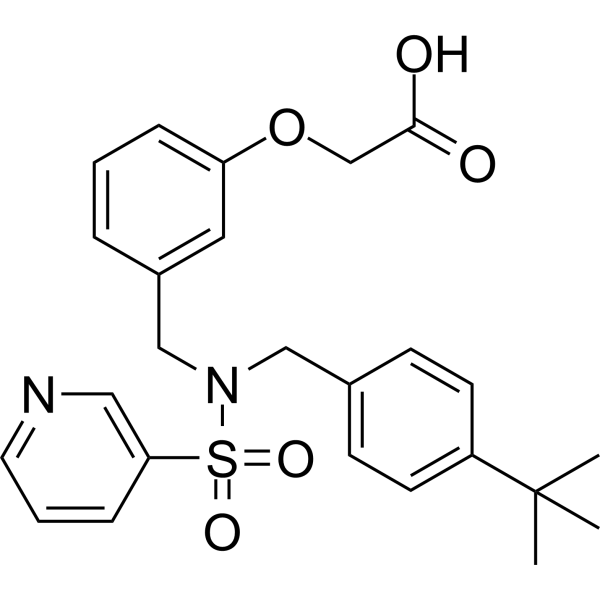
- HY-103183
-
-
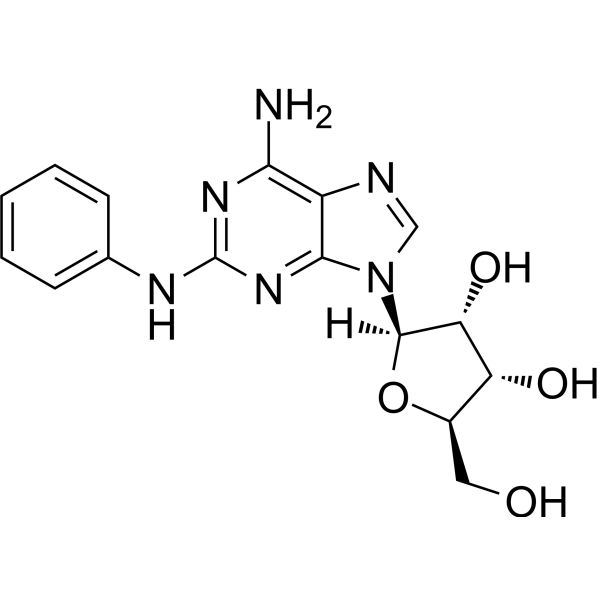
- HY-B0164
-
|
|
Histamine Receptor
|
Inflammation/Immunology
|
|
Mizolastine is an orally active, high affinity and specific peripheral histamine H1 receptor antagonist (second generation antihistamine). Mizolastine effectively inhibits mRNA expression of VEGF165, VEGF120, TNF-α and KC. Mizolastine can be used in studies of allergic rhinitis and chronic idiopathic urticarial .
|
-
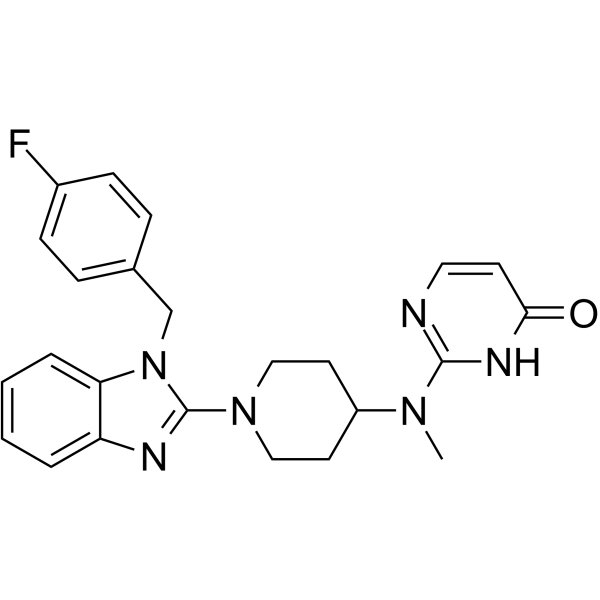
- HY-B0164A
-
|
|
Histamine Receptor
|
Inflammation/Immunology
|
|
Mizolastine dihydrochloride is an orally active, high affinity and specific peripheral histamine H1 receptor antagonist (second generation antihistamine). Mizolastine dihydrochloride effectively inhibits mRNA expression of VEGF165, VEGF120, TNF-α and KC. Mizolastine dihydrochloride can be used in studies of allergic rhinitis and chronic idiopathic urticarial .
|
-
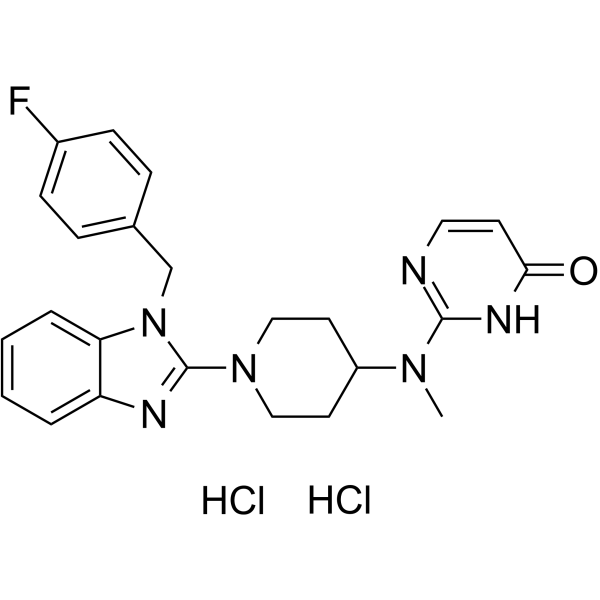
- HY-N7292
-
|
|
Others
|
Inflammation/Immunology
|
|
Bakkenolide B is isolated from petasites japonicas leaves and has anti-allergic and anti-inflammatory effects. Bakkenolide B can be used for the study of asthma .
|
-
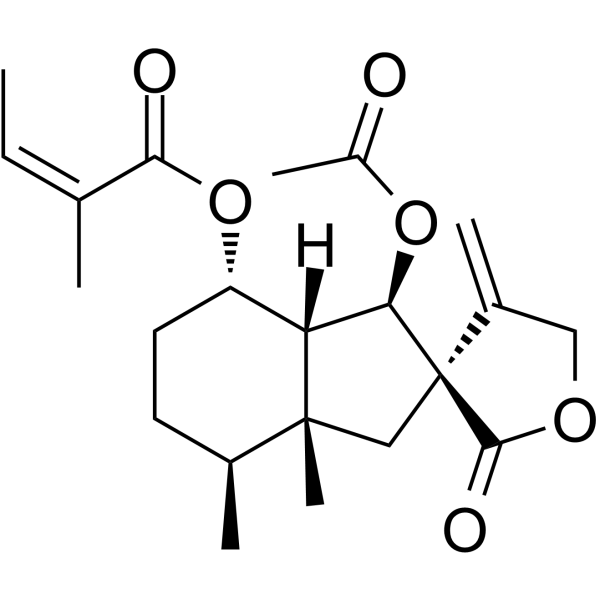
- HY-106178
-
PMX-53
3 Publications Verification
3D53
|
Complement System
|
Cardiovascular Disease
Inflammation/Immunology
Cancer
|
|
PMX-53 (3D53) is a synthetic peptidic and a potent and orally active complement C5a receptor (CD88) antagonist with an IC50 of 20 nM. PMX-53 is also a low-affinity MrgX2 agonist that stimulates MrgX2-mediated mast cell degranulation. PMX-53 specifically binds to C5aR1 and does not bind to the second C5aR (C5L2) and C3aR. PMX-53 has anti-inflammatory, anticancer and antiatherosclerotic effects .
|
-
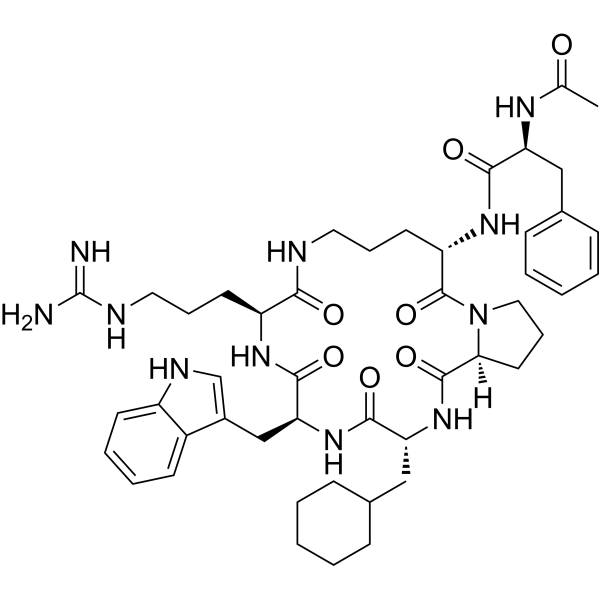
- HY-108944
-
|
|
SHP2
Phosphatase
|
Inflammation/Immunology
|
|
LYP-IN-1 is a potent, selective and specific LYP inhibitor with a Ki and an IC50 of 110 nM and 0.259 μM, respectively. LYP-IN-1 also has selectivity for a large panel of PTPs, such as SHP1 (IC50=5 μM) and SHP2 (IC50=2.5 μM). LYP-IN-1 exhibits highly efficacious cellular activity in T- and mast cells. LYP-IN-1 can be used for the study of autoimmune disorders . LYP-IN-1 is a click chemistry reagent, it contains an Alkyne group and can undergo copper-catalyzed azide-alkyne cycloaddition (CuAAc) with molecules containing Azide groups.
|
-
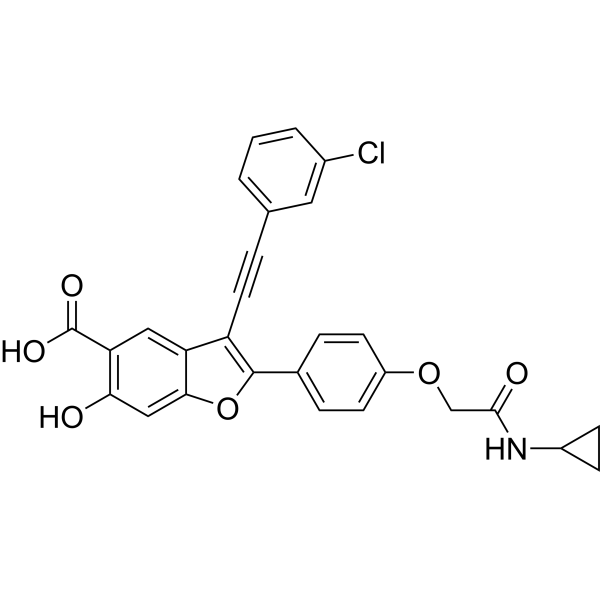
- HY-W250143
-
|
|
Biochemical Assay Reagents
|
Others
|
|
Toluidine blue (ZnCl2) is a basic thiazine dye commonly used as a biological stain for microscopy. It has a deep bluish-purple color and is commonly used to stain nucleic acids such as DNA and RNA, as well as to stain mast cells, cartilage, and other connective tissues. Toluidine blue (ZnCl2) stains the acidic components of these tissues, such as sulfated or carboxylated mucopolysaccharides. It is frequently used in histology, cytology, and pathology applications to aid in the diagnosis of various diseases and conditions. The dye is usually applied to tissue sections prior to microscopic examination and can be differentiated using an acidic alcohol solution. Toluidine blue (ZnCl2) is a relatively simple and inexpensive stain with good reproducibility, making it a popular choice for many laboratories.
|
-
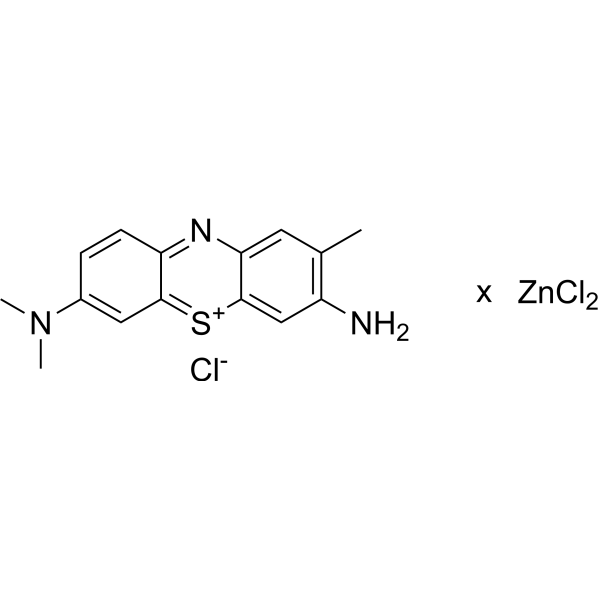
- HY-13723A
-
|
SDZ-ASM 981 hydrate
|
Phosphatase
|
Inflammation/Immunology
|
|
Pimecrolimus hydrate (SDZ-ASM 981 hydrate) is a potent, nonsteroid and orally active calcineurin inhibitor. Pimecrolimus hydrate shows anti-inflammatory activity. Pimecrolimus hydrate has the potential for the research of atopic dermatitis and oral erosive lichen planus .
|
-
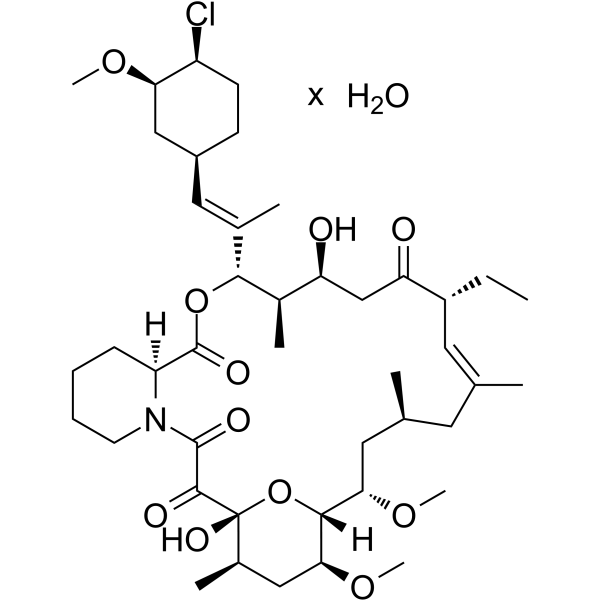
- HY-19989
-
|
L-660711
|
Leukotriene Receptor
LPL Receptor
|
Inflammation/Immunology
|
|
MK-571 (L-660711) is an orally active, potent and selective competitive leukotriene D4 (LTD4) receptor antagonist, with Ki values of 0.22 and 2.1 nM in guinea pig and human lung membranes, respectively. MK-571 is also a MRP4 and ABCC1 (MRP1) inhibitor. MK-571 inhibits constitutive and antigen-stimulated S1P (sphingosine-1-phosphate) release .
|
-
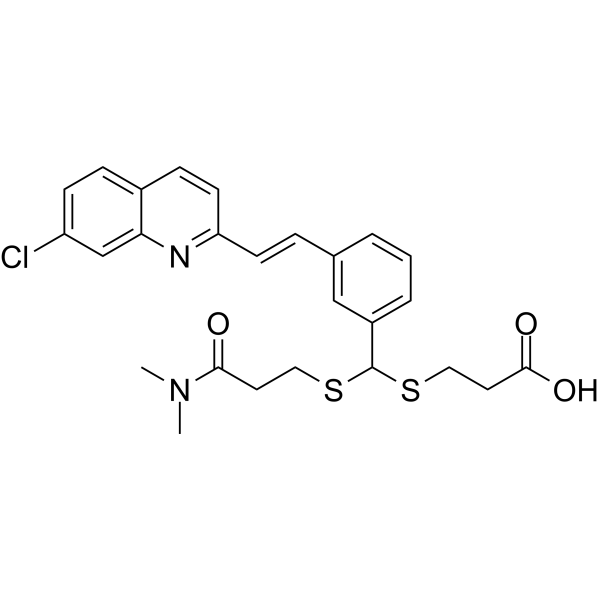
- HY-Y0320
-
|
DMSO
|
Bacterial
Cholinesterase (ChE)
|
Infection
Inflammation/Immunology
Cancer
|
Dimethyl sulfoxide (DMSO) is an aprotic solvent that dissolves polar and non-polar compounds, including water-insoluble therapeutic and toxic agents. Dimethyl sulfoxide (DMSO) has a strong affinity for water and can rapidly penetrate or enhance the penetration of other substances into biological membranes. Dimethyl sulfoxide also has potential free radical scavenging and anticholinesterase effects and may affect coagulation activity. Dimethyl sulfoxide also induces histamine release from mast cells but is thought to have low systemic toxicity. Dimethyl sulfoxide also exhibits antifreeze and antibacterial properties .
MCE provides Dimethyl sulfoxide that complies with the inspection standards (Ch.P) of Part 4 of the Chinese Pharmacopoeia (2020 Edition).
|
-

- HY-P5357
-
|
|
Protease Activated Receptor (PAR)
|
Others
|
|
SFNGGP-NH2 is a biological active peptide. (PAR-3 is a high-affinity thrombin receptor. PAR-3 mRNA is expressed in the cutaneous mast cells of humans. Protease-Activated Receptors (PARs) have been studied for their roles in itch and their itch-associated response through histamine-dependent/independent pathways have been reported. PAR-3 has been shown not to induce itching alone but possibly in conjunction with PAR-4. Co-expression of PAR-3 and PAR-4 enhances thrombin action suggesting that PAR-3 alone does not mediate transmembrane signaling but instead functions as a cofactor to activate PAR-4.)
|
-
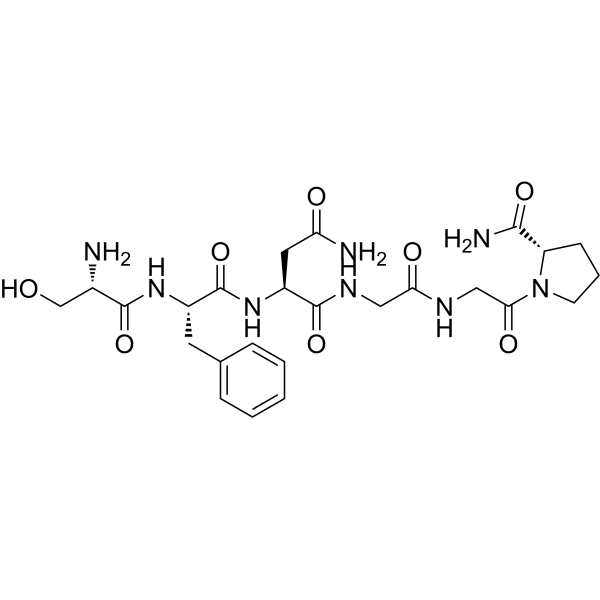
- HY-19989A
-
|
L-660711 sodium
|
Leukotriene Receptor
LPL Receptor
|
Inflammation/Immunology
|
|
MK-571 (L-660711) sodium is an orally active, potent and selective competitive leukotriene D4 (LTD4) receptor antagonist, with Ki values of 0.22 and 2.1 nM in guinea pig and human lung membranes, respectively. MK-571 sodium is also a inhibitor of multidrug resistance-associated protein MRP4 (ABCC4) and ABCC1 (MRP1). MK-571 sodium inhibits constitutive and antigen-stimulated S1P (sphingosine-1-phosphate) release .
|
-
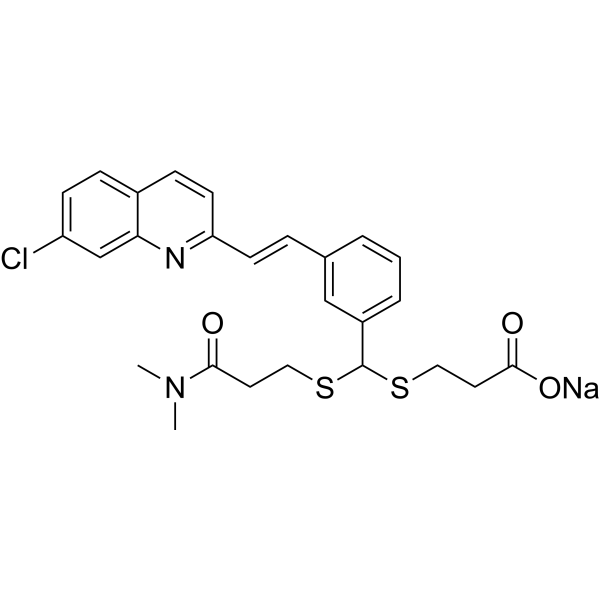
- HY-13723
-
|
SDZ-ASM 981
|
Phosphatase
|
Inflammation/Immunology
|
|
Pimecrolimus (SDZ-ASM 981) is a potent, nonsteroid and orally active calcineurin inhibitor with a Ki of 117 nM. Pimecrolimus shows anti-inflammatory activity .
|
-
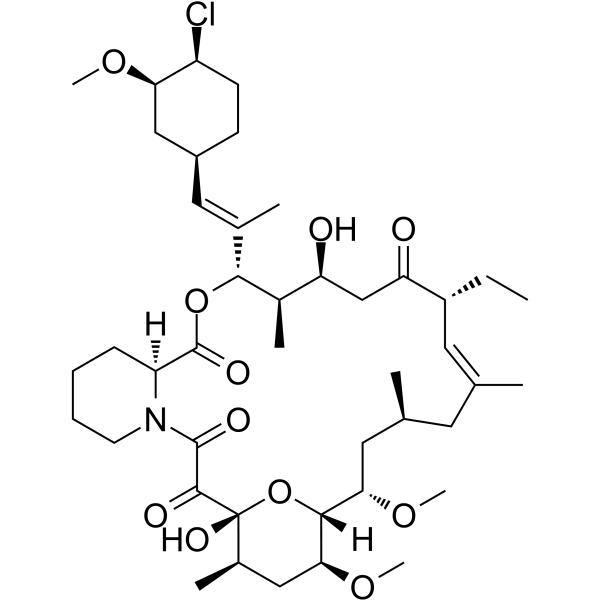
- HY-114203
-
-
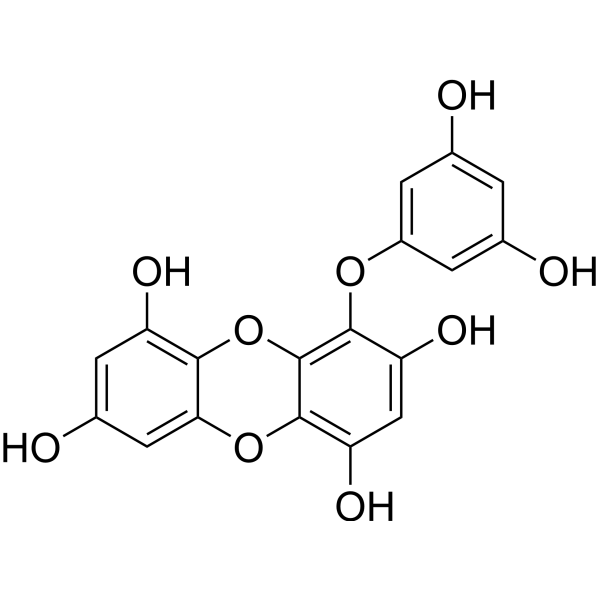
| Cat. No. |
Product Name |
Type |
-
- HY-D0220A
-
|
Toluidine Blue O (purity 36%)
|
Dyes
|
|
Toluidine Blue (Toluidine Blue O) purity 36% is an alkaline quinonimine dye (vivo dye) with high affinity for acidic tissue components, staining nuclei blue and polysaccharides purple. Toluidine Blue purity 36% shows heterostaining properties for mast cells, mucins and chondrocytes. Toluidine Blue purity 36% can stain different components of plant tissues and cells in different colours. Toluidine Blue purity 36% is also used as a diagnostic aid to identify malignant lesions, such as cancer .
|
-
- HY-W250143
-
|
|
Dyes
|
|
Toluidine blue (ZnCl2) is a basic thiazine dye commonly used as a biological stain for microscopy. It has a deep bluish-purple color and is commonly used to stain nucleic acids such as DNA and RNA, as well as to stain mast cells, cartilage, and other connective tissues. Toluidine blue (ZnCl2) stains the acidic components of these tissues, such as sulfated or carboxylated mucopolysaccharides. It is frequently used in histology, cytology, and pathology applications to aid in the diagnosis of various diseases and conditions. The dye is usually applied to tissue sections prior to microscopic examination and can be differentiated using an acidic alcohol solution. Toluidine blue (ZnCl2) is a relatively simple and inexpensive stain with good reproducibility, making it a popular choice for many laboratories.
|
| Cat. No. |
Product Name |
Type |
-
- HY-Y0320
-
|
DMSO
|
Co-solvents
|
Dimethyl sulfoxide (DMSO) is an aprotic solvent that dissolves polar and non-polar compounds, including water-insoluble therapeutic and toxic agents. Dimethyl sulfoxide (DMSO) has a strong affinity for water and can rapidly penetrate or enhance the penetration of other substances into biological membranes. Dimethyl sulfoxide also has potential free radical scavenging and anticholinesterase effects and may affect coagulation activity. Dimethyl sulfoxide also induces histamine release from mast cells but is thought to have low systemic toxicity. Dimethyl sulfoxide also exhibits antifreeze and antibacterial properties .
MCE provides Dimethyl sulfoxide that complies with the inspection standards (Ch.P) of Part 4 of the Chinese Pharmacopoeia (2020 Edition).
|
-
- HY-131162
-
|
|
Biochemical Assay Reagents
|
|
Chymase is a protein-digester enzyme found primarily in mast cells (MC), fibroblasts, and vascular endothelial cells. Chymase is released into the extracellular stroma in the context of inflammatory signals, tissue injury and cellular stress. Chymase is also involved in angiotensin II (Ang II) production, which is used in cardiovascular disease studies .
|
-
- HY-E70177
-
|
EC:2.8.2.8; NDST2; N-HSST 2
|
Enzyme Substrates
|
|
N-Deacetylase/N-Sulfotransferase 2 is a sulfotransferase. N-Deacetylase/N-Sulfotransferase 2 synthesizes serglycin-bound heparin chains in mast cells .
|
| Cat. No. |
Product Name |
Target |
Research Area |
-
- HY-P5717
-
|
|
Peptides
|
Infection
|
|
Peptide 12d is an antimicrobial peptide isolated from the venom of wasp. Peptide 12d mediates antimicrobial response by stimulating mast cell degranulation .
|
-
- HY-P1807
-
|
|
Histamine Receptor
|
Inflammation/Immunology
|
|
Mast Cell Degranulating Peptide HR-2, a 14-membered linear peptide isolated from the venom of the giant hornet Vespa orientalis, is capable of degranulating mast cells and thus initiating histamine release .
|
-
- HY-P2706
-
|
|
Histamine Receptor
|
Endocrinology
|
|
Granuliberin R is a new mast cell degranulating peptide comes from amphibian, can be isolated from the skin of frog Rana rugosa. Granuliberin R is a dodecapeptide, can act on rat peritoneal mast cell to liberate granules and release histamine .
|
-
- HY-P2442
-
|
|
Peptides
|
Others
|
|
Bombolitin V is a potent antimicrobial peptide with an ED 50 value of 2 micrograms/ml in causing mast cell degranulation .
|
-
- HY-P4580
-
|
|
Proteasome
|
Others
|
|
Suc-Ala-Ala-Pro-Phe-SBzl can be used as the substrate of rat intestinal mast cell protease (RMCP I), rat skeletal muscle mast cell protease (RMCP II) and Chymotrypsin (HY-108910). Suc-Ala-Ala-Pro-Phe-SBzl can be hydrolyzed by glycine (R208G) .
|
-
- HY-P1987
-
|
|
Peptides
|
Neurological Disease
|
|
Mast cell degranulating peptide (28-49) is a depolarizing agent from bee venom, it can raise the content of cGMP level in mouse cerebellar slices .
|
-
- HY-P5727
-
|
|
Peptides
|
Infection
|
|
HR1 is a mastoid protease. HR1 can increase the permeability of human erythrocyte membrane. HR1 can induce cytoplasmic membrane permeation in bacteria and mast cells .
|
-
- HY-12537
-
-
- HY-P3837
-
|
XP-2
|
Peptides
|
Metabolic Disease
|
|
Xenopsin-Related Peptide 2 (XP-2) is an avian counterpart to amphibian Xenopsin (HY-P0253). Xenopsin-Related Peptide 2 displays abilities to release histamine from isolated rat mast cells and is as effective as synthetic Bradykinin (HY-P0206) .
|
-
- HY-106178
-
PMX-53
3 Publications Verification
3D53
|
Complement System
|
Cardiovascular Disease
Inflammation/Immunology
Cancer
|
|
PMX-53 (3D53) is a synthetic peptidic and a potent and orally active complement C5a receptor (CD88) antagonist with an IC50 of 20 nM. PMX-53 is also a low-affinity MrgX2 agonist that stimulates MrgX2-mediated mast cell degranulation. PMX-53 specifically binds to C5aR1 and does not bind to the second C5aR (C5L2) and C3aR. PMX-53 has anti-inflammatory, anticancer and antiatherosclerotic effects .
|
-
- HY-P5357
-
|
|
Protease Activated Receptor (PAR)
|
Others
|
|
SFNGGP-NH2 is a biological active peptide. (PAR-3 is a high-affinity thrombin receptor. PAR-3 mRNA is expressed in the cutaneous mast cells of humans. Protease-Activated Receptors (PARs) have been studied for their roles in itch and their itch-associated response through histamine-dependent/independent pathways have been reported. PAR-3 has been shown not to induce itching alone but possibly in conjunction with PAR-4. Co-expression of PAR-3 and PAR-4 enhances thrombin action suggesting that PAR-3 alone does not mediate transmembrane signaling but instead functions as a cofactor to activate PAR-4.)
|
| Cat. No. |
Product Name |
Target |
Research Area |
-
- HY-P99193
-
|
MEDI-528
|
Interleukin Related
|
Inflammation/Immunology
|
|
Enokizumab (MEDI-528) is a monoclonal antibody targeting to interleukin (IL)-9. IL-9 regulates the development of airway inflammation, mucus production, airway hyperresponsiveness, and airway fibrosis largely by increasing mast cell numbers and activity in the airways .
|
-
- HY-P99371
-
|
AK002; Anti-Siglec-8 Reference Antibody (lirentelimab)
|
Apoptosis
|
Inflammation/Immunology
|
|
Lirentelimab (AK002) is a humanized IgG1 monoclonal antibody that targets sialic acid-binding Ig-like lectin 8 (SIGLEC8). Lirentelimab induces cell apoptosis of IL-5-activated eosinophils and inhibits IgE-mediated mast cell activation. Lirentelimab can be used for the research of eosinophilic gastritis and duodenitis .
|
-
- HY-P99462
-
|
CDX 0159
|
c-Kit
|
Inflammation/Immunology
|
|
Barzolvolimab (CDX 0159) is a humanized anti-KIT IgG1 monoclonal antibody. Barzolvolimab specificity and potently inhibits KIT activation by SCF. Barzolvolimab can reduce skin mast cells and disease activity in chronic inducible urticaria .
|
| Cat. No. |
Product Name |
Category |
Target |
Chemical Structure |
| Cat. No. |
Product Name |
Chemical Structure |
-
- HY-B0157AS
-
|
|
|
Ketotifen-d3 (fumarate) is the deuterium labeled Ketotifen fumarate. Ketotifen (HC 20511) fumarate is a second-generation noncompetitive H1-antihistamine and mast cell stabilizer, which is used to prevent asthma attacks[1][2].
|
-

-
- HY-N8593S
-
|
|
|
Undecane-d24 is the deuterium labeled Undecane[1]. Undecane has anti-allergic and anti-inflammatory activities on sensitized rat basophilic leukemia (RBL-2H3) mast cells and HaCaT keratinocytes. In sensitized mast cells, Undecane inhibits degranulation and the secretion of histamine and TNF-α[2].
|
-

-
- HY-W062109S
-
|
|
|
Olopatadine-d6 is the deuterium labeled Olopatadine[1]. Olopatadine is an orally active and selective histamine 1 (H1) receptor antagonist and a mast cell stabilizer. Olopatadine prevents immunologically stimulated pro-inflammatory mediator release from human conjunctival mast cells. Olopatadine can be used for researching allergic conjunctivitis[2][3].
|
-

-
- HY-B1619S
-
|
|
|
Cromoglicic acid-d5 is the deuterium labeled Cromolyn[1]. Cromolyn is a mast cell stabilizer. Cromolyn has the potential for the research of bronchial asthma, allergic rhinitis, and certain allergic eye conditions such as vernal conjunctivitis, keratitis, and keratoconjunctivitis[2].
|
-

-
- HY-B0640S
-
|
|
|
Epinastine- 13C,d3 (hydrobromide) is the 13C- and deuterium labeled Epinastine. Epinastine (WAL801) is an antihistamine and mast cell stabilizer. Epinastine is a potent, selective and orally-active histamine H1 receptor antagonist. Epinastine also inhibits IL-8 release and has an antiallergic action[1][2][3][4].
|
-

-
- HY-10330S
-
|
|
|
Toceranib-d8 is the deuterium labeled Toceranib. Toceranib (SU11654) is an orally active receptor tyrosine kinase (RTK) inhibitor, and it potently inhibits PDGFR, VEGFR, and Kit with Kis of 5 and 6 nM for PDGFRβ and Flk-1/KDR, respectively. Toceranib (SU11654) has antitumor and antiangiogenic activity, and used in the treatment of canine mast cell tumors[1][2].
|
-

Your information is safe with us. * Required Fields.
Inquiry Information
- Product Name:
- Cat. No.:
- Quantity:
- MCE Japan Authorized Agent:



























































































